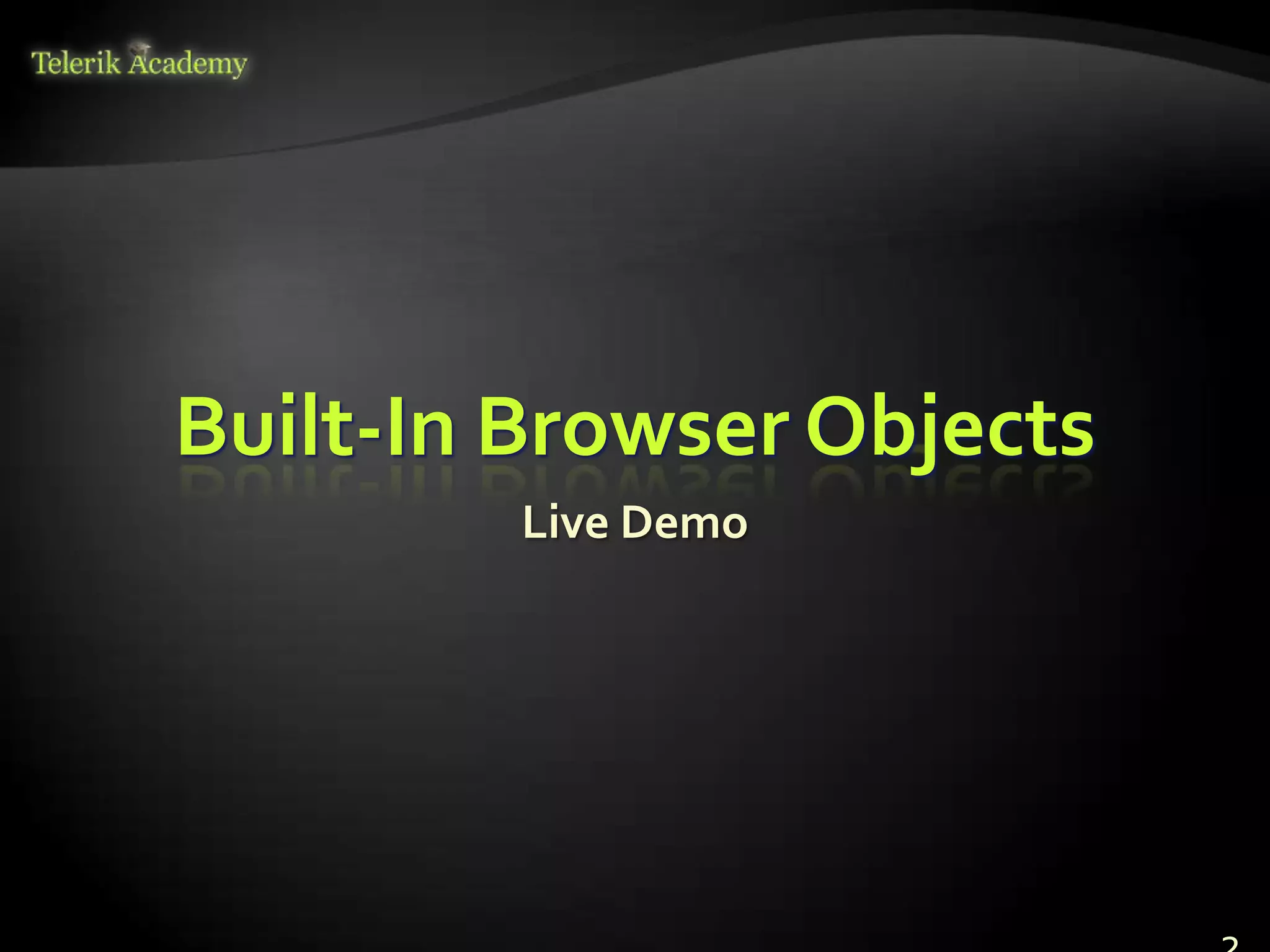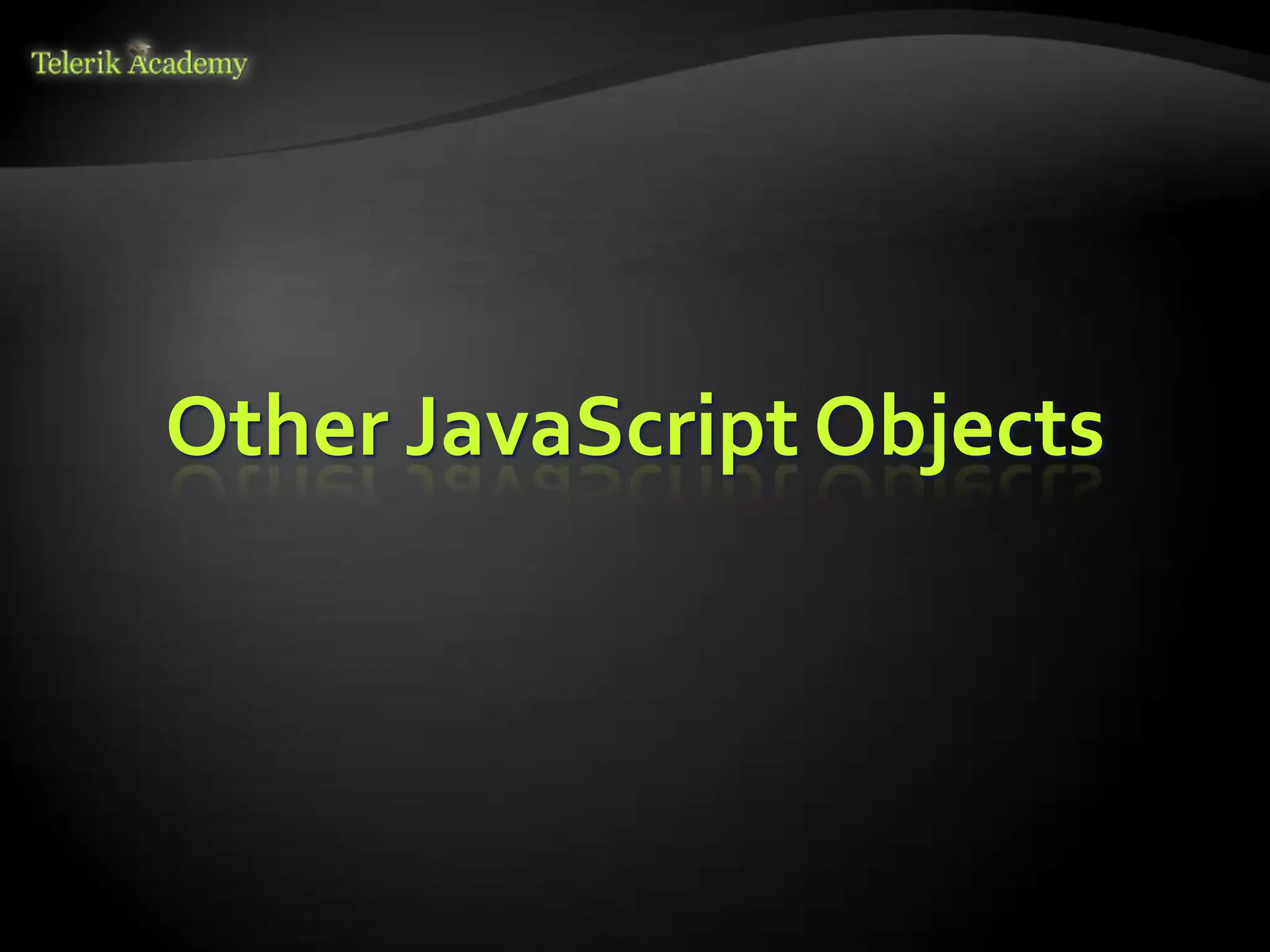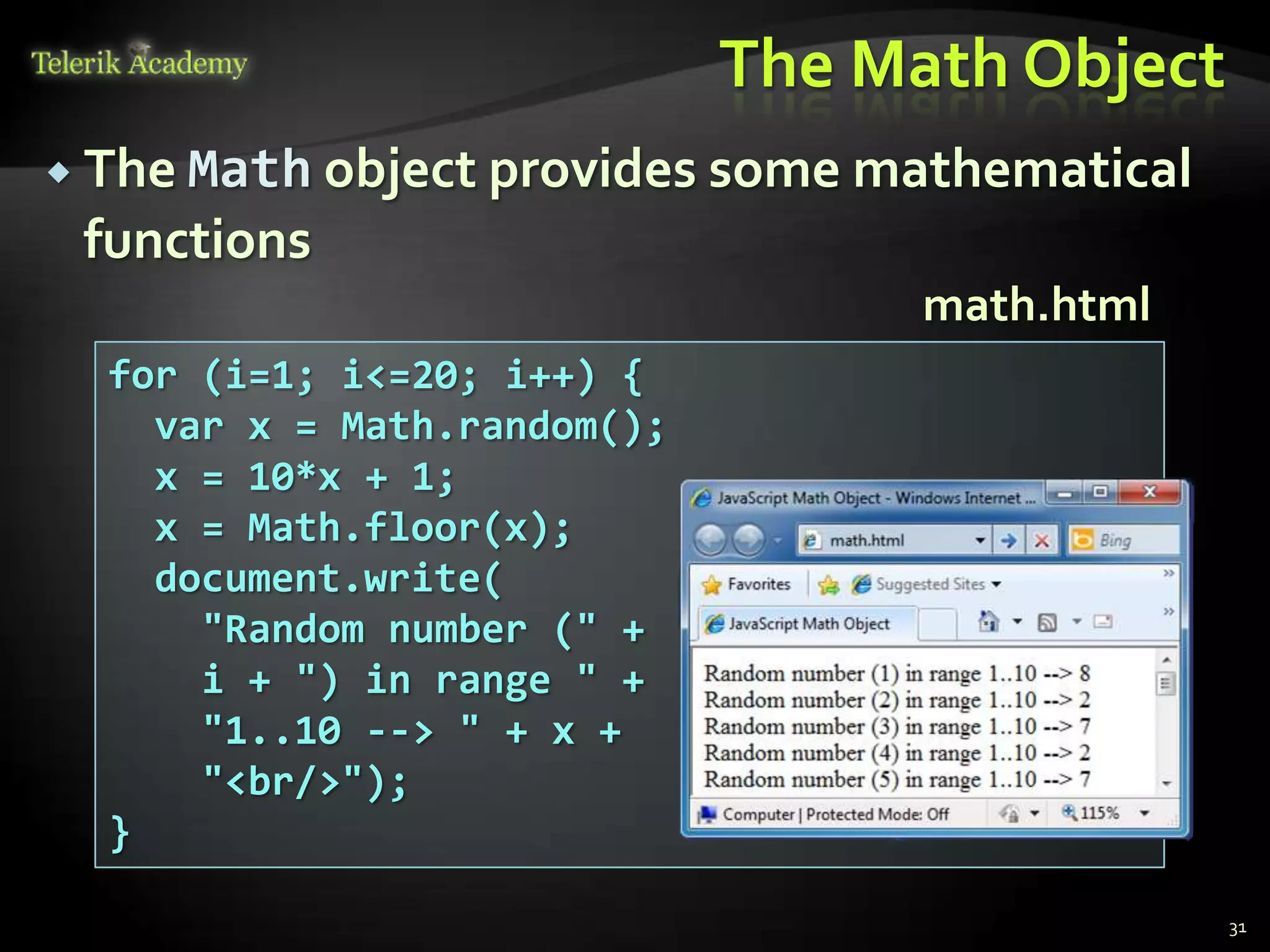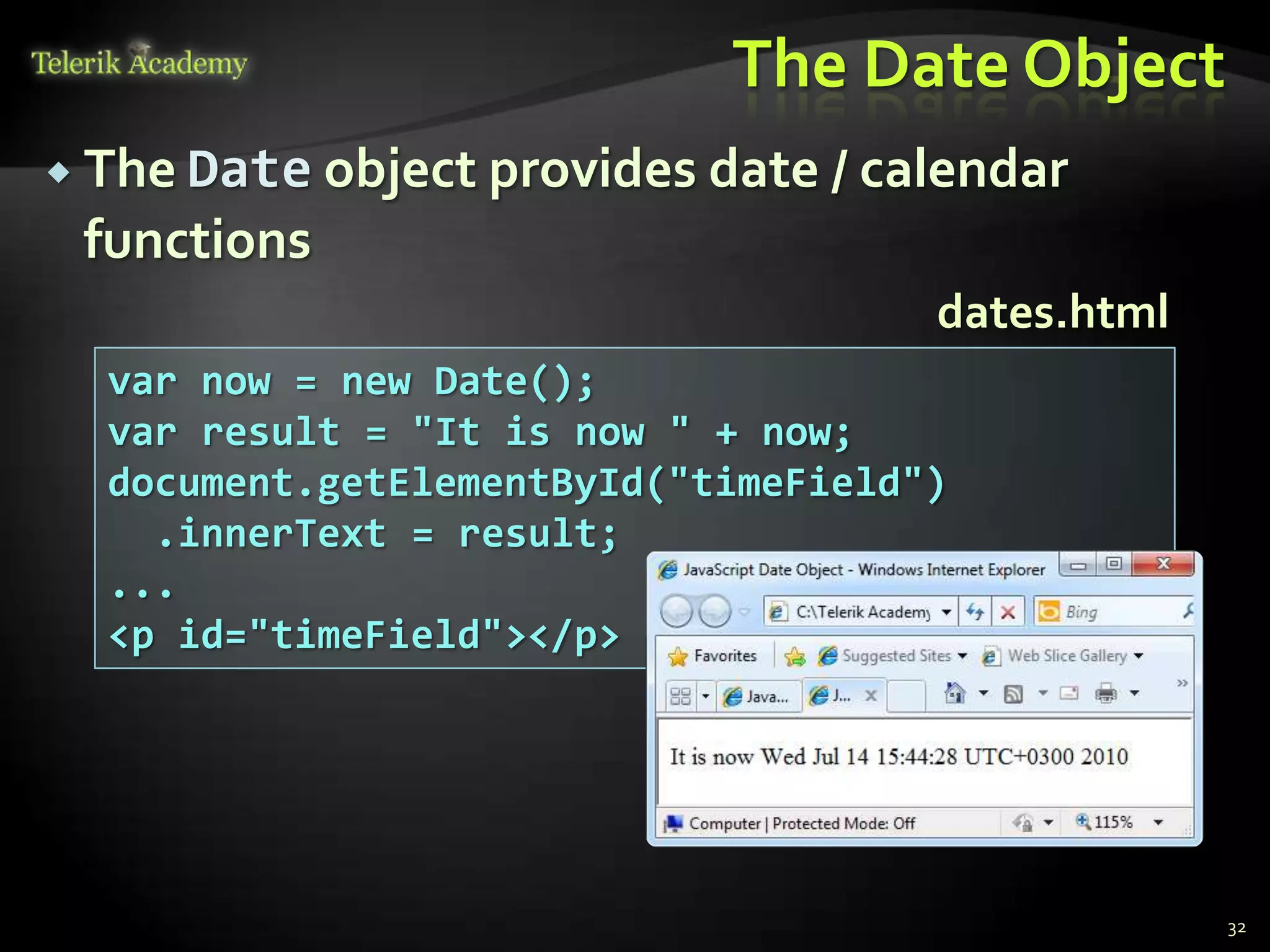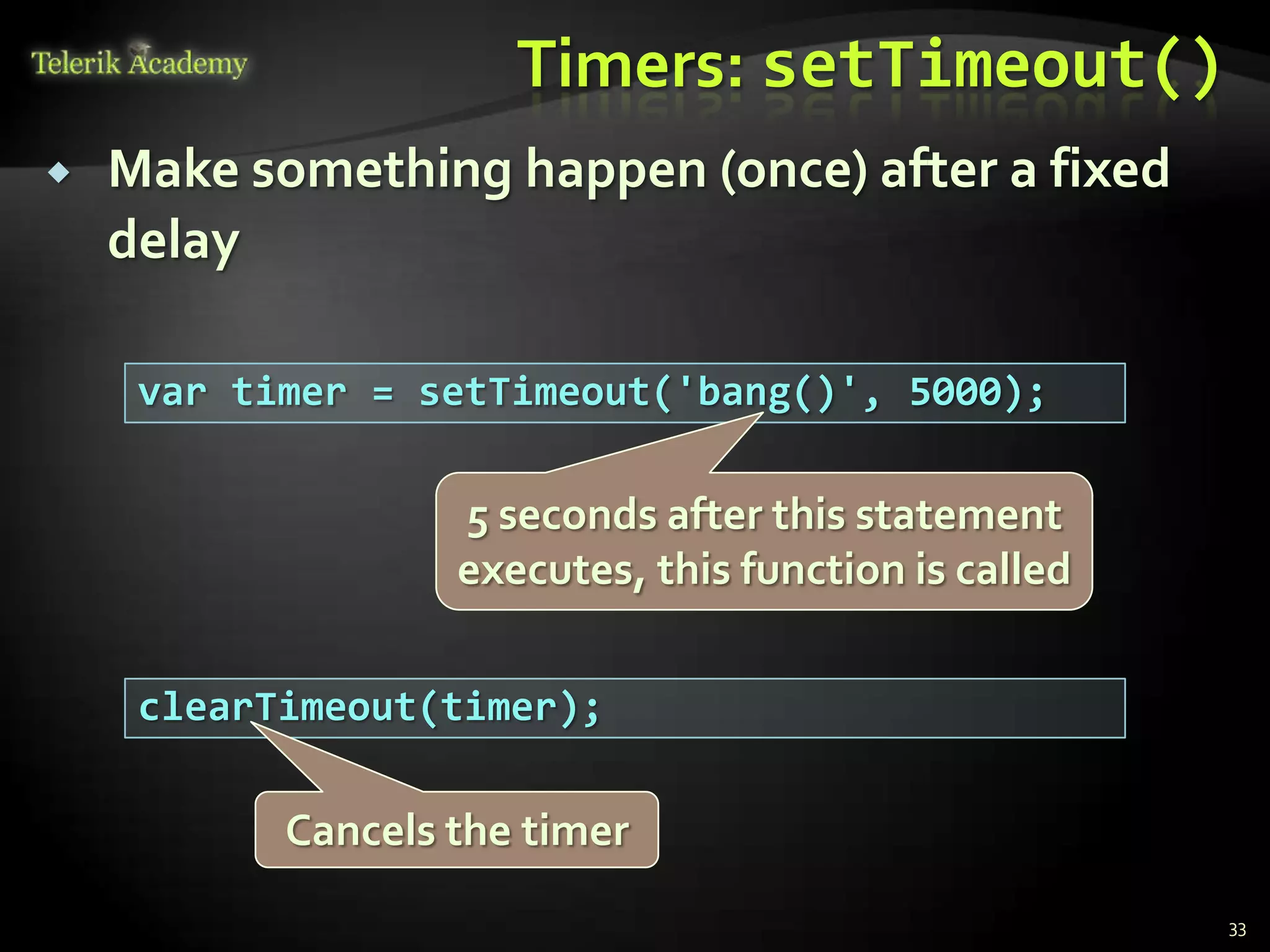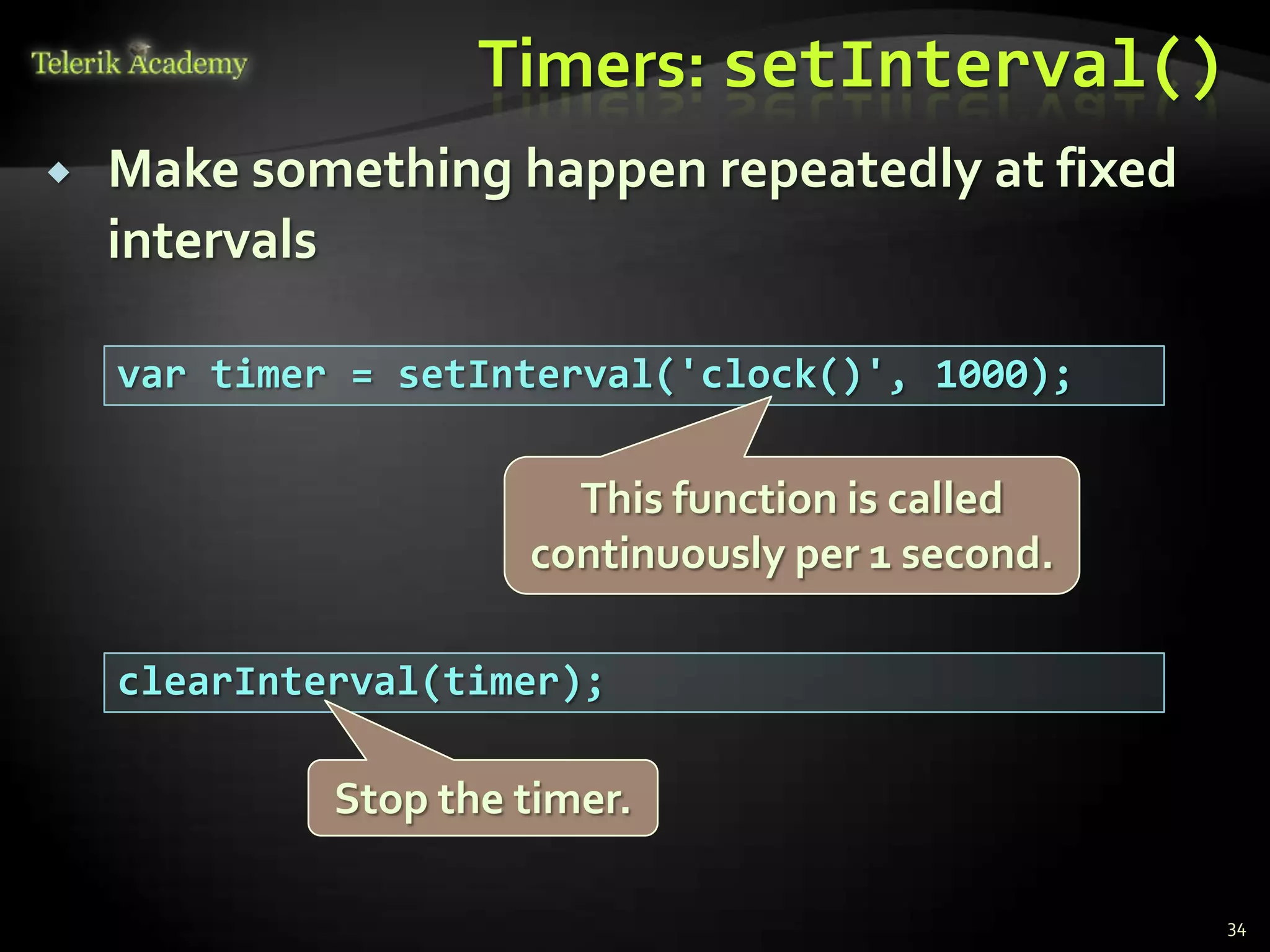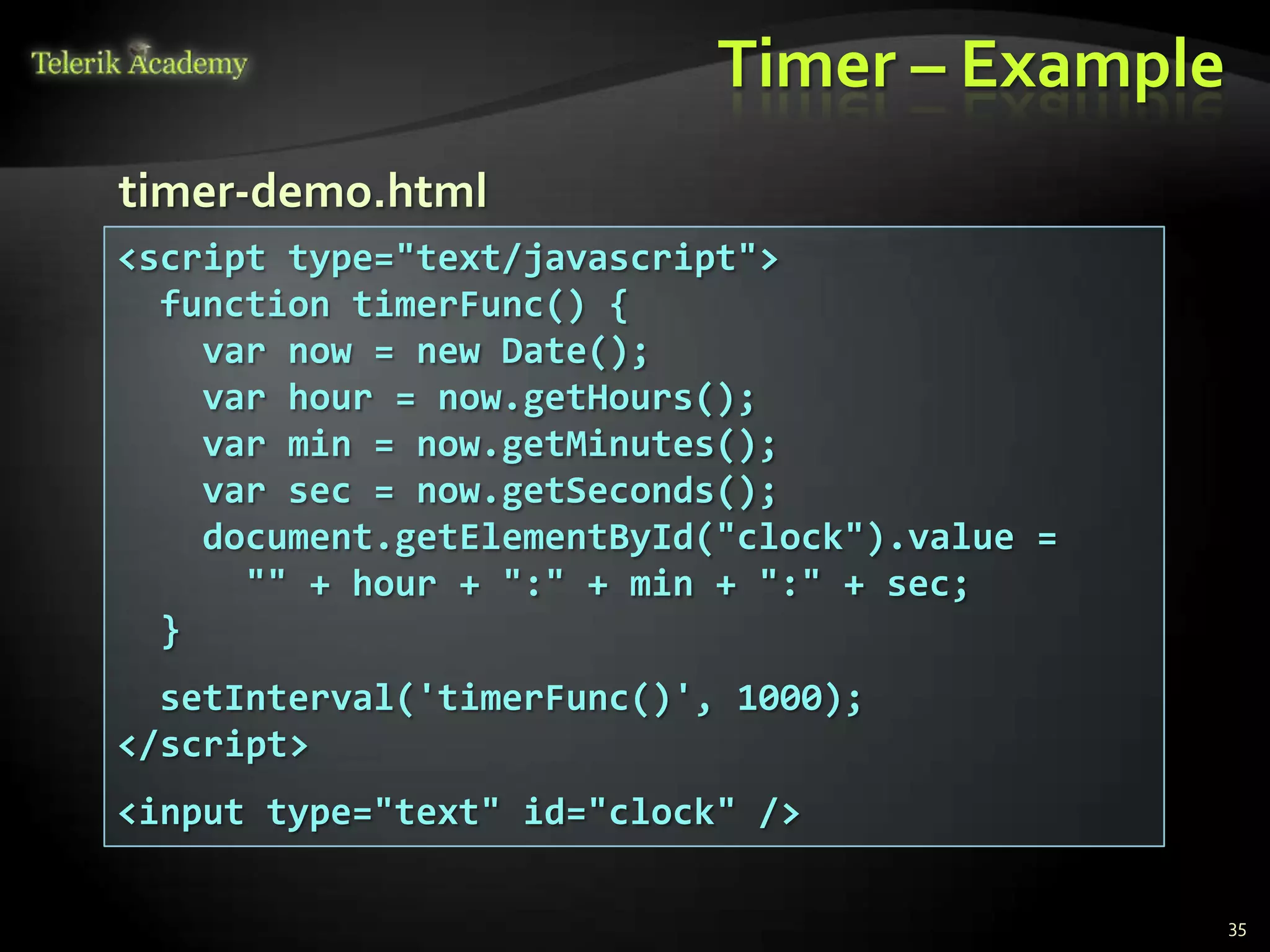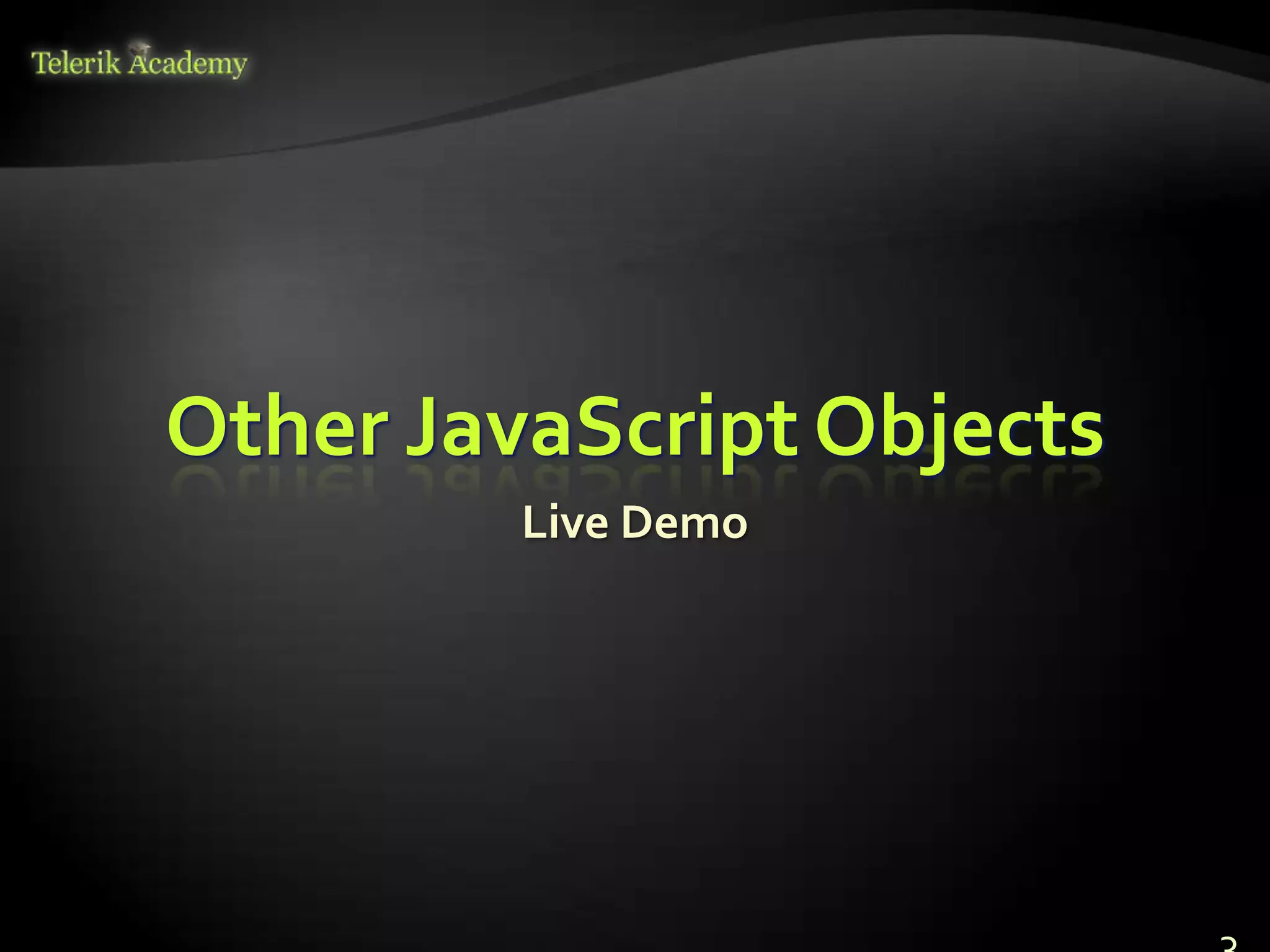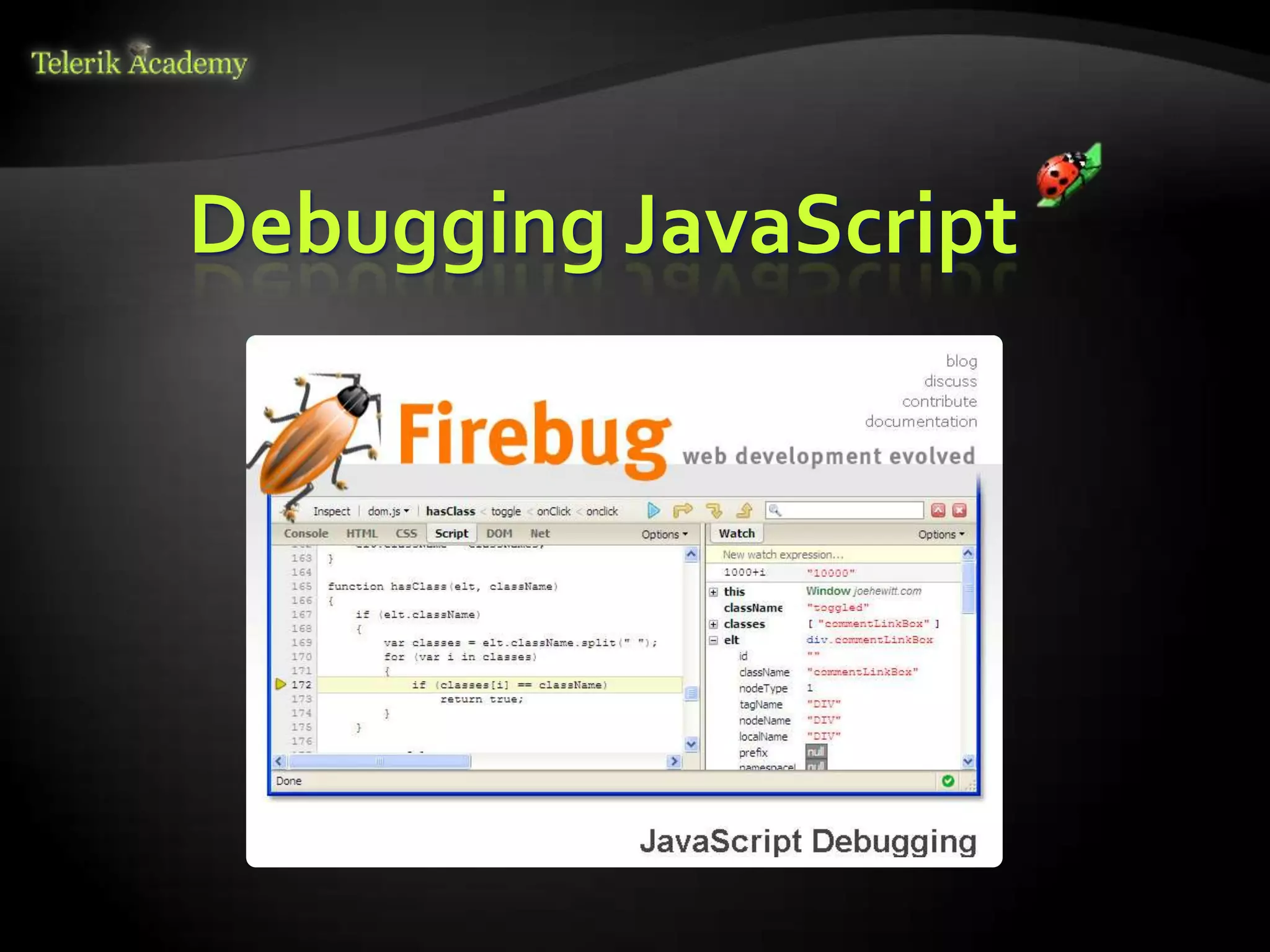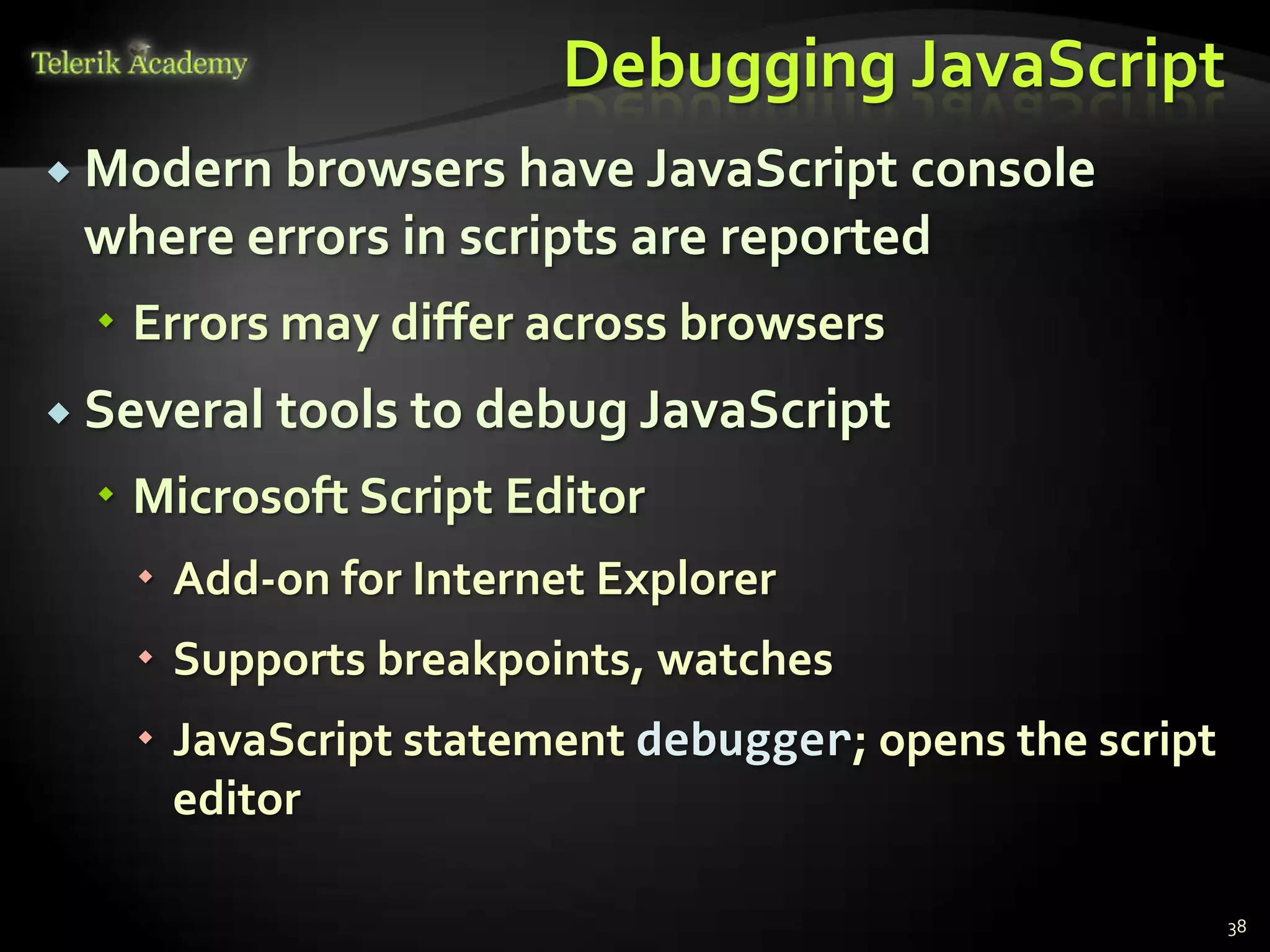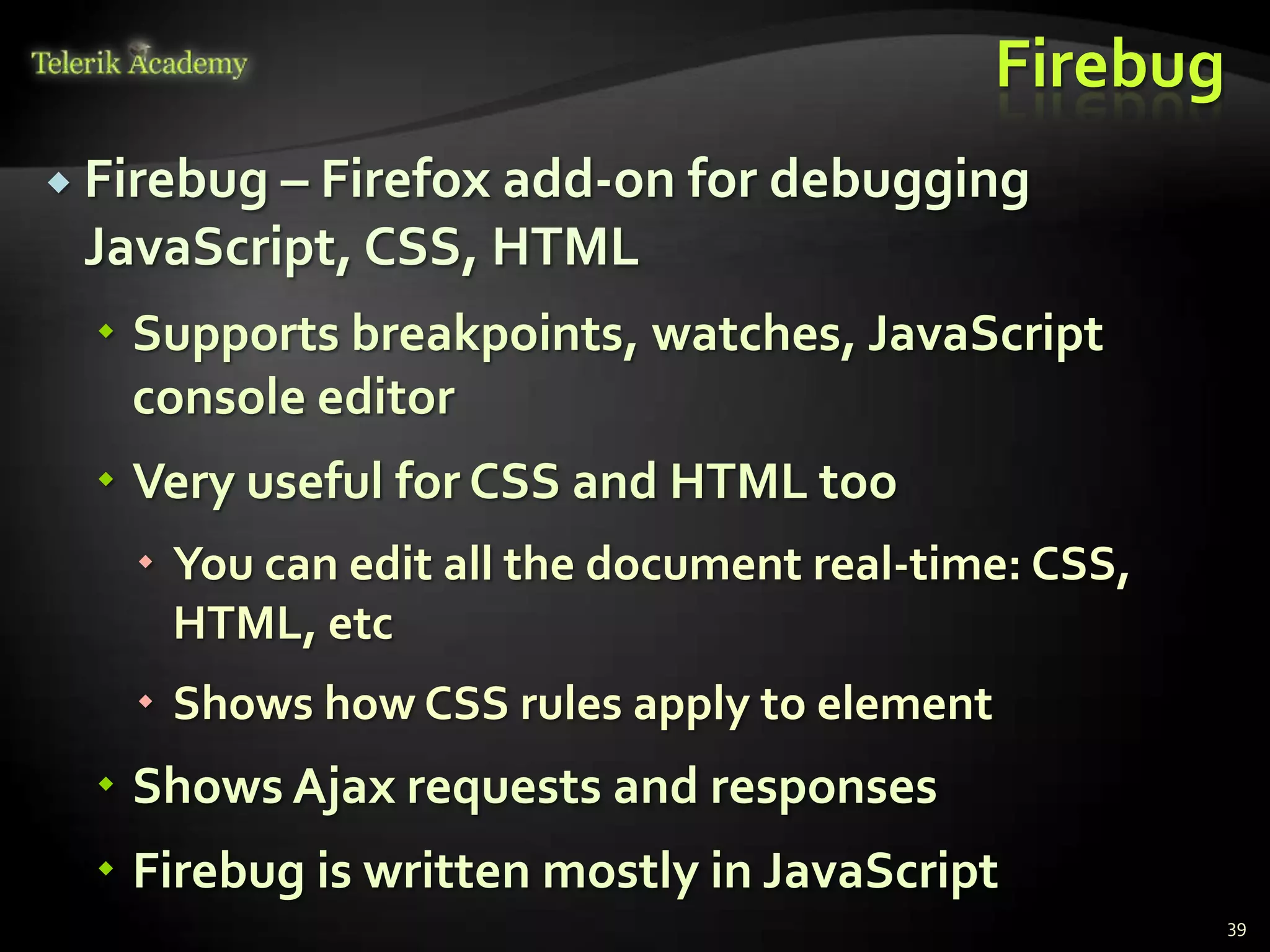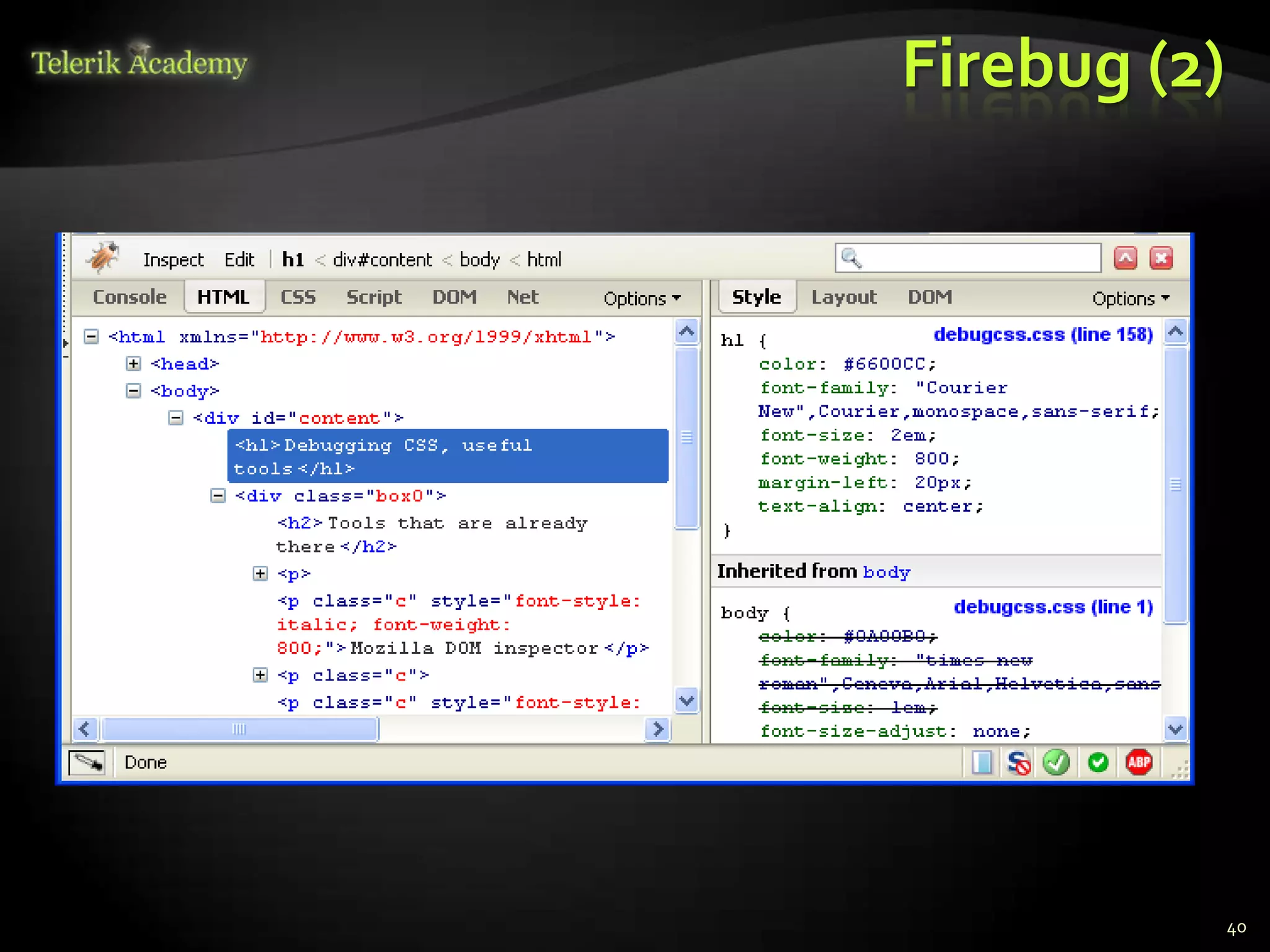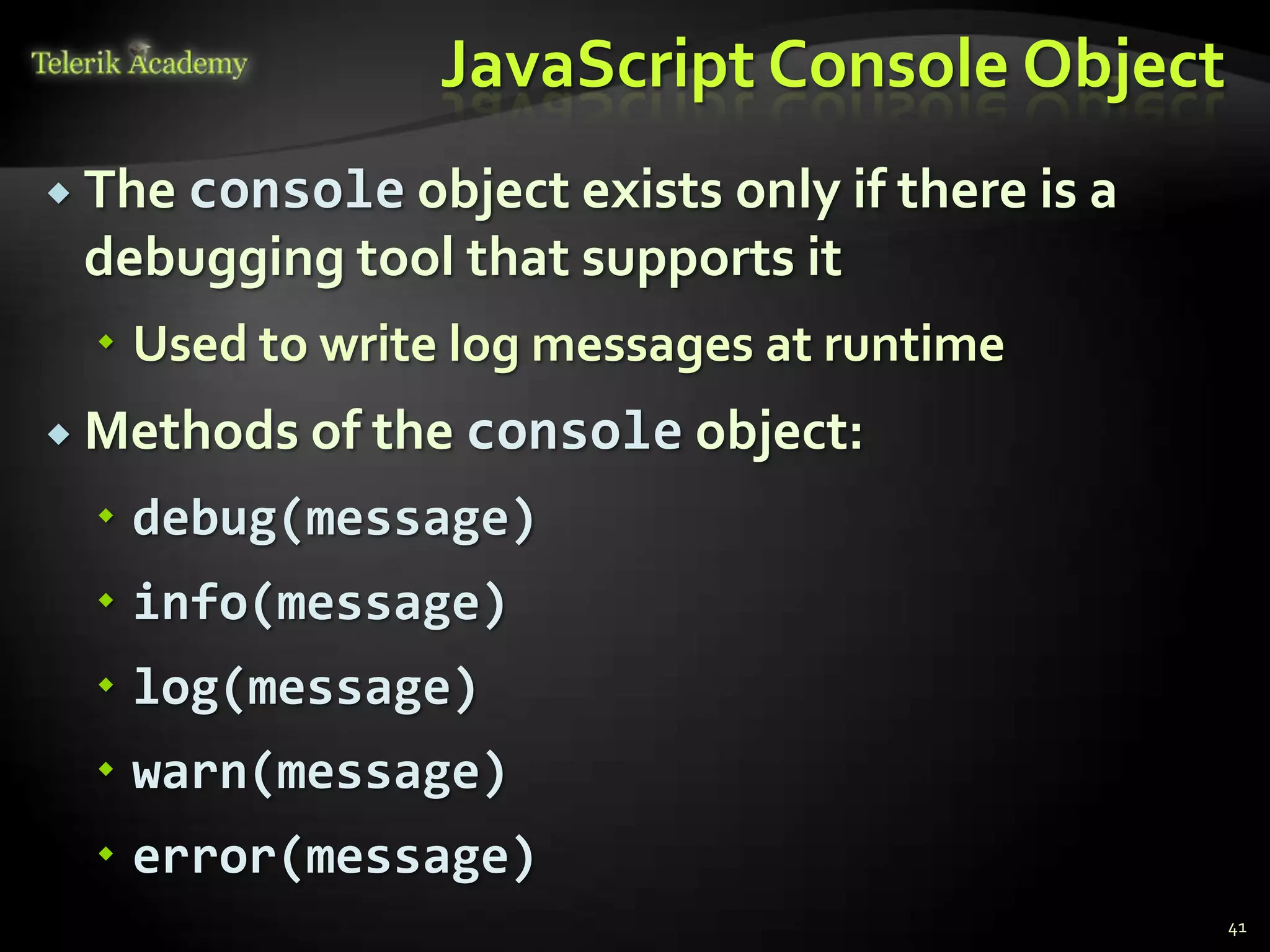This document provides an introduction to dynamic HTML (DHTML) and JavaScript development. It defines DHTML as a combination of HTML, CSS, and JavaScript that allows web pages to react and change in response to user actions. It discusses how JavaScript enables dynamic behavior and interactivity on web pages by handling events, modifying HTML elements and the DOM tree, and performing other tasks. It also covers common JavaScript concepts like functions, objects, and syntax as well as built-in browser objects and timers.

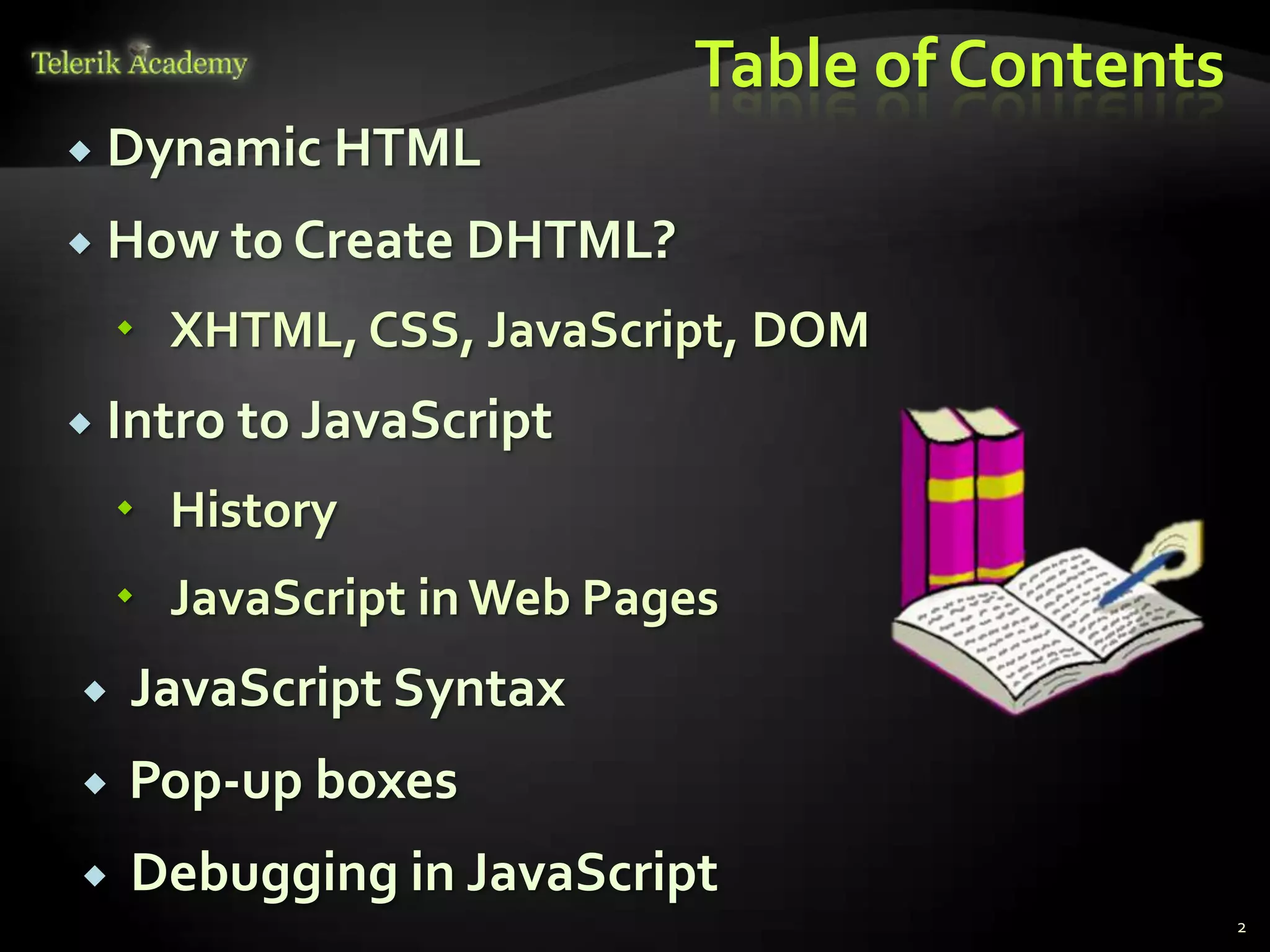
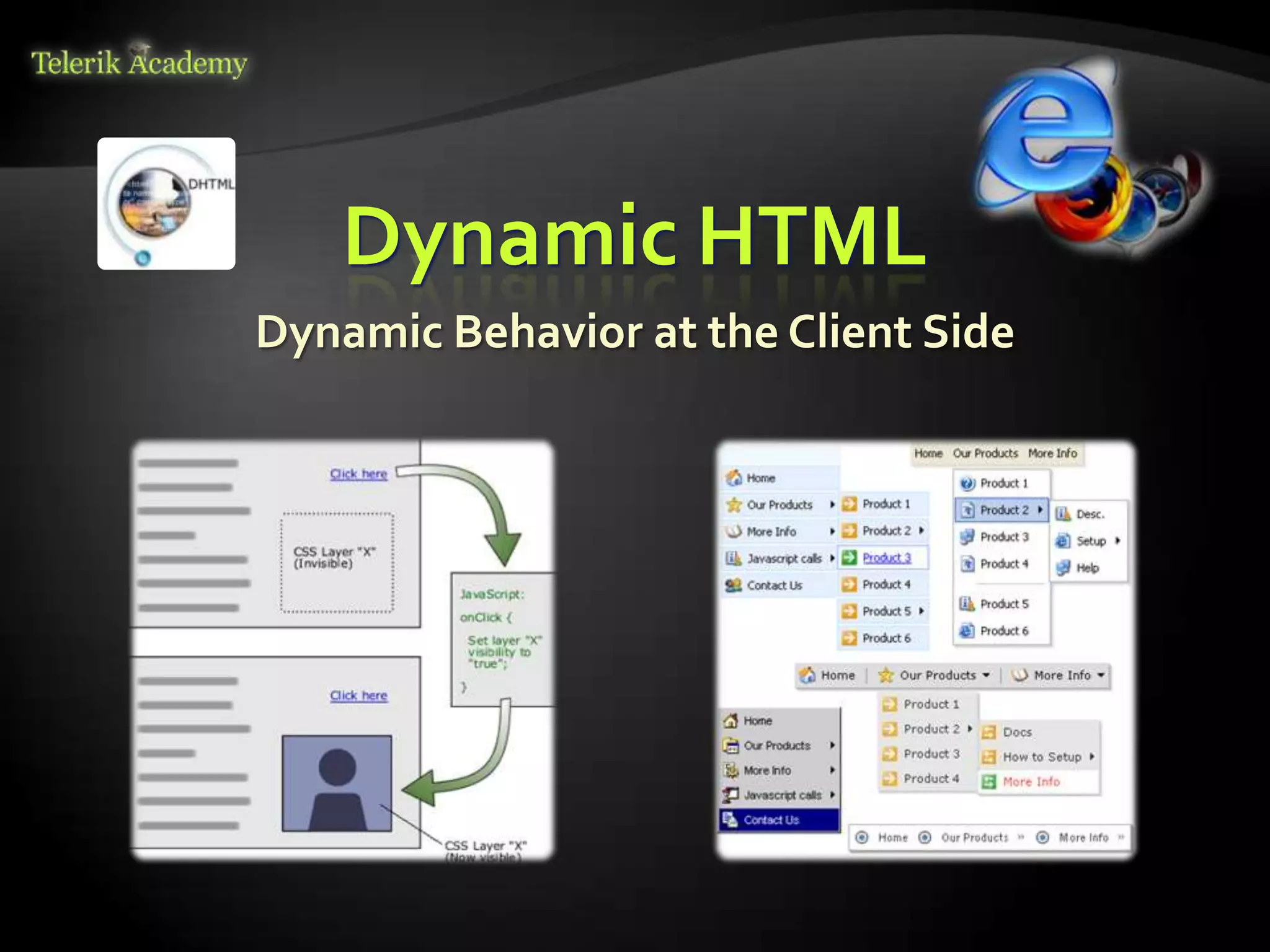
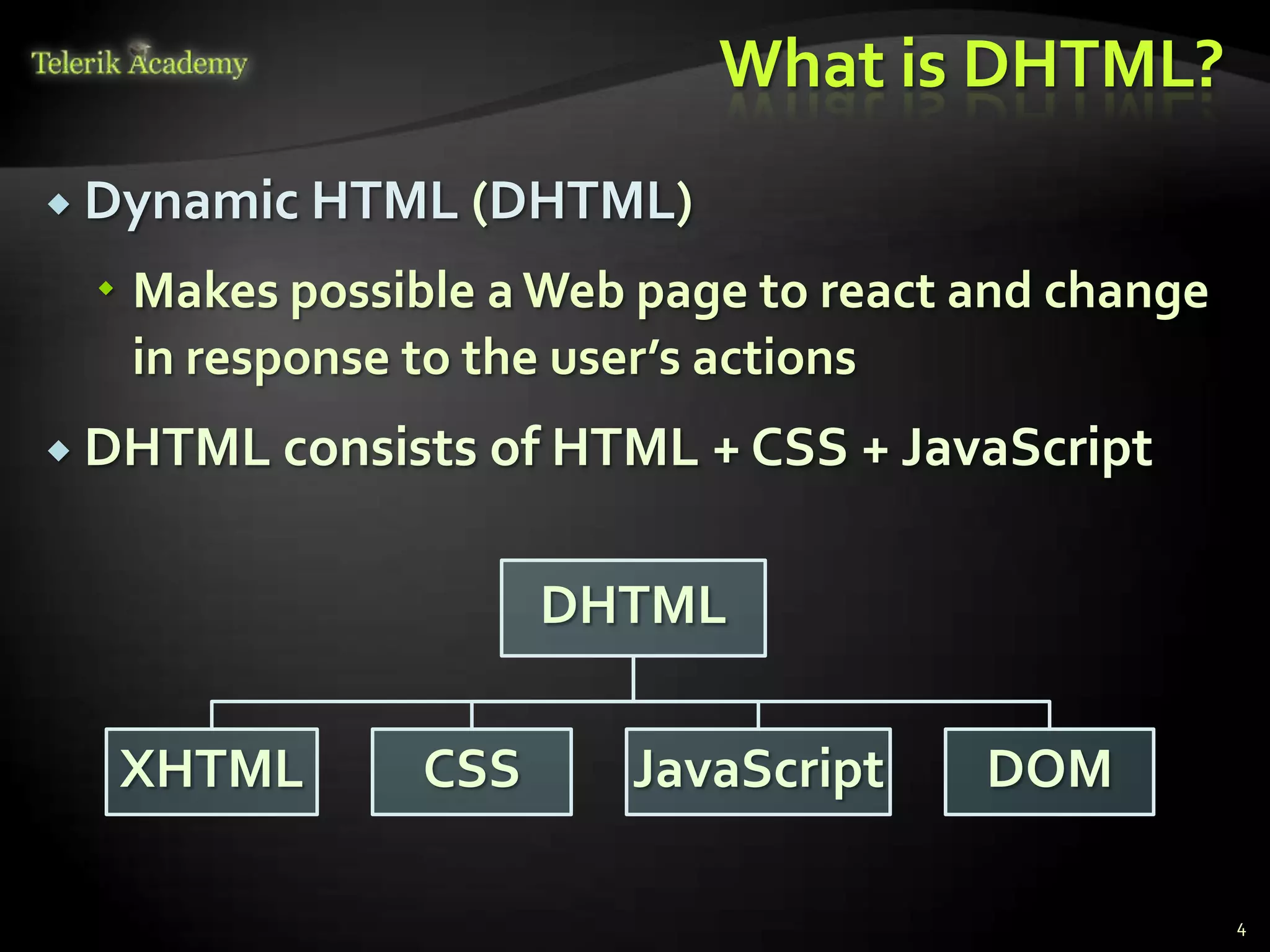
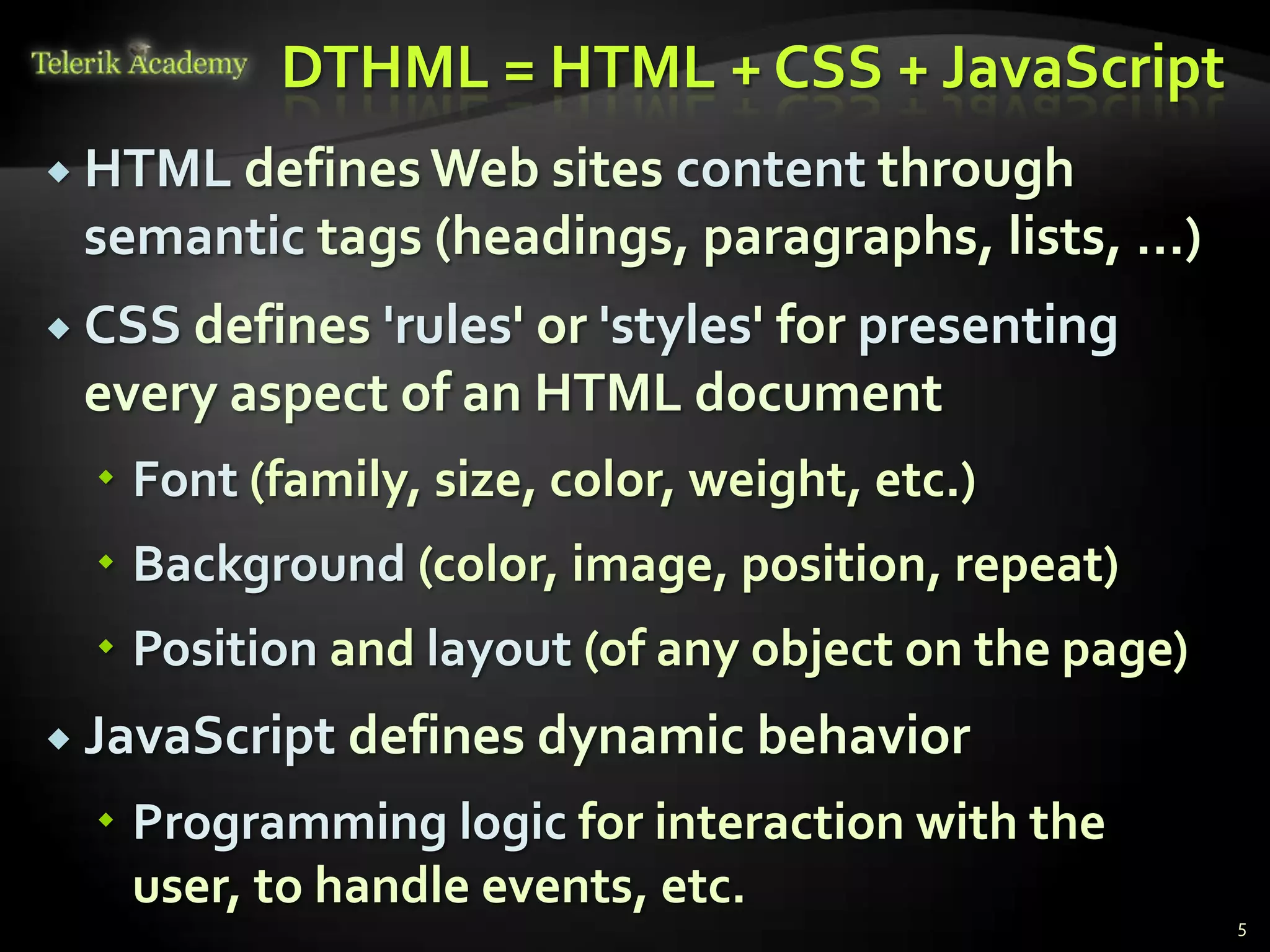
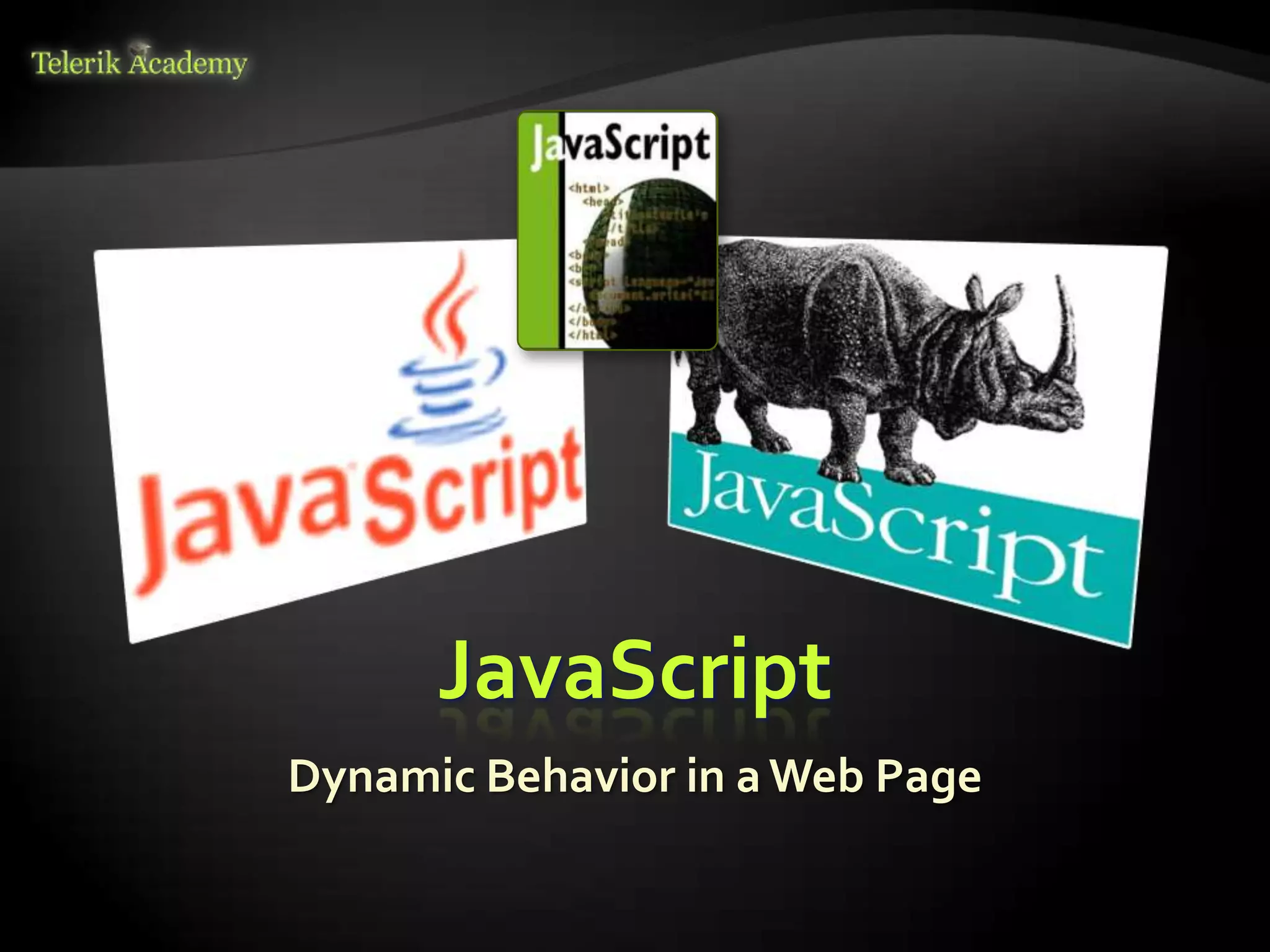
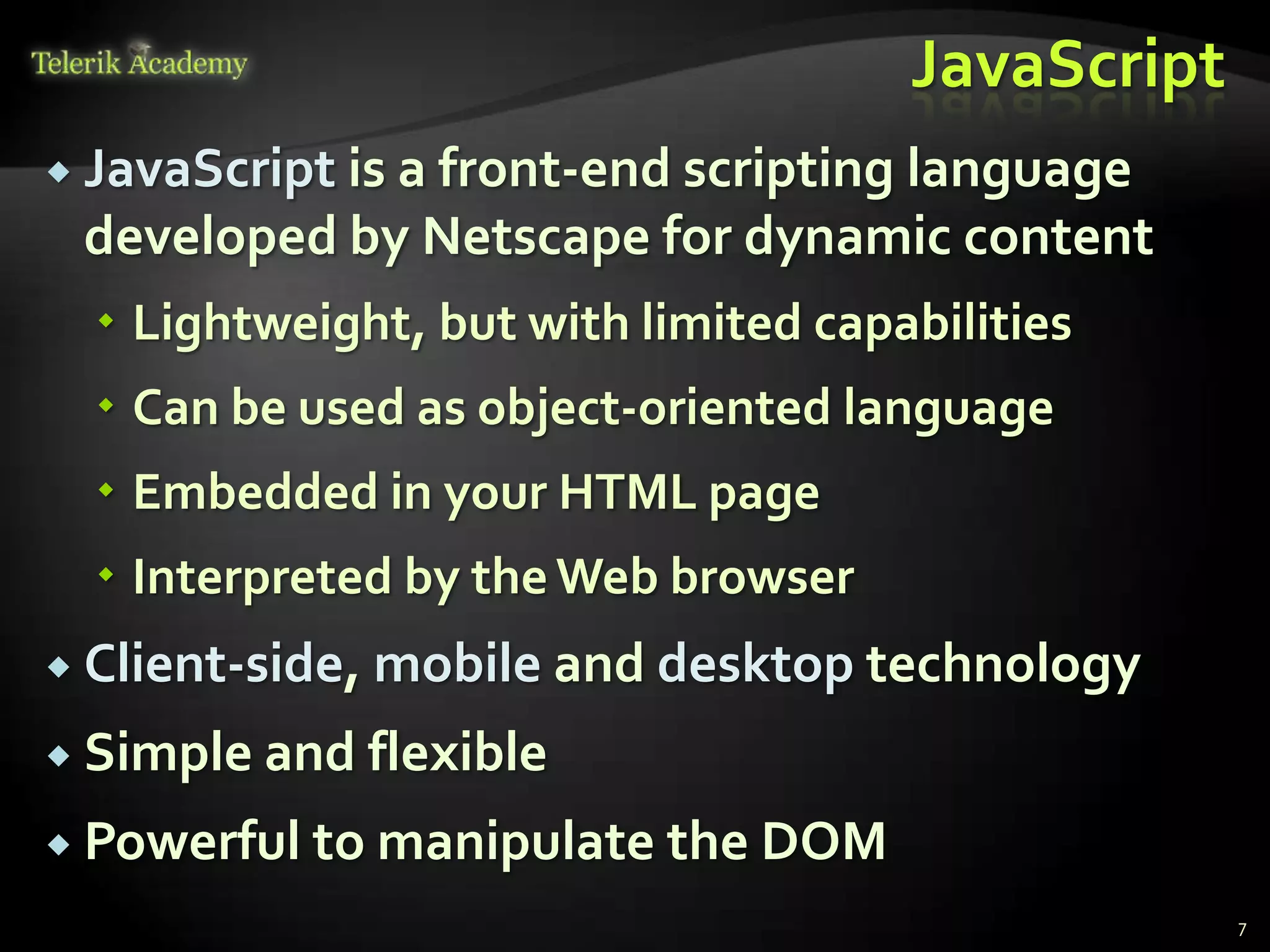
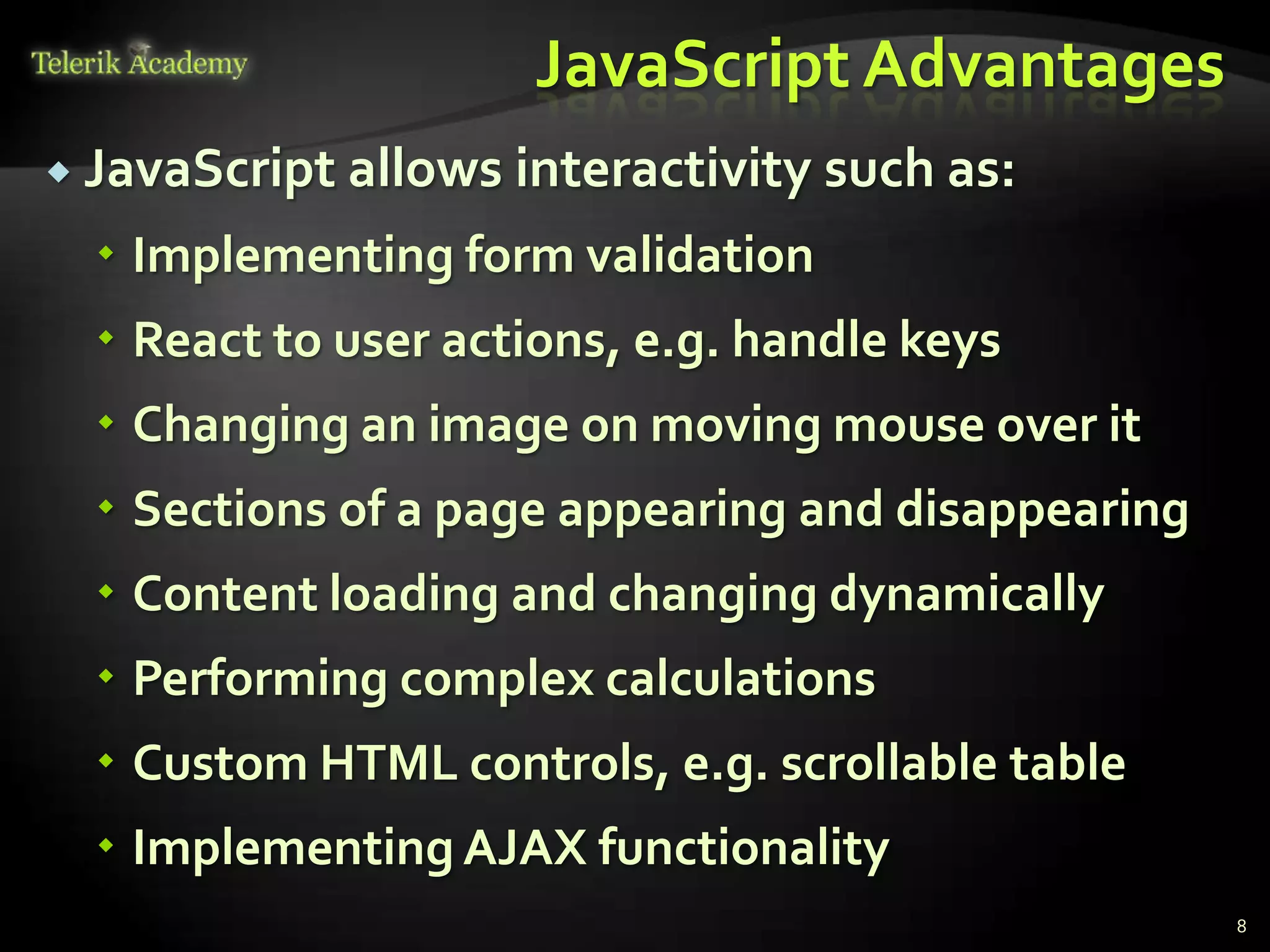
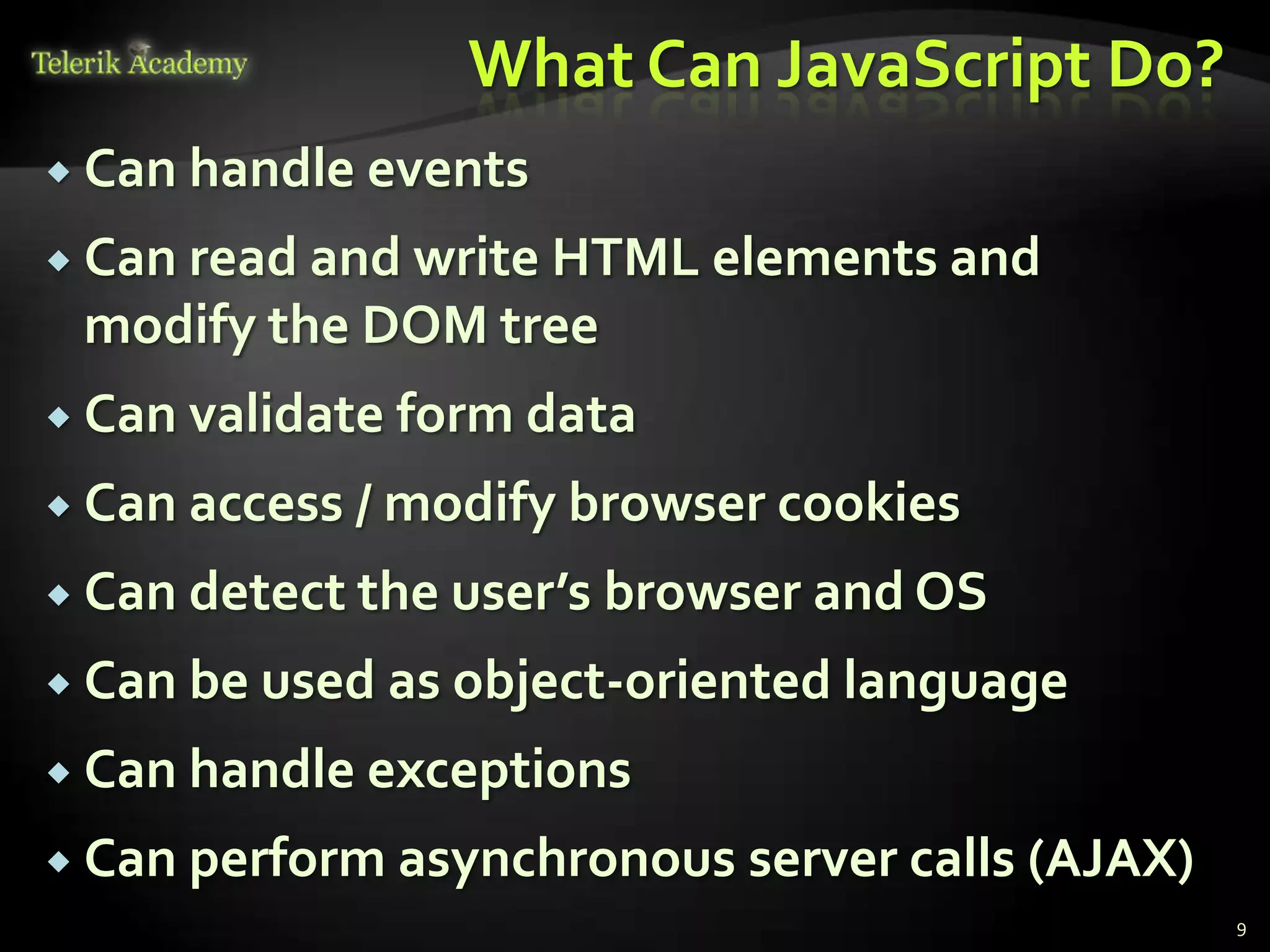
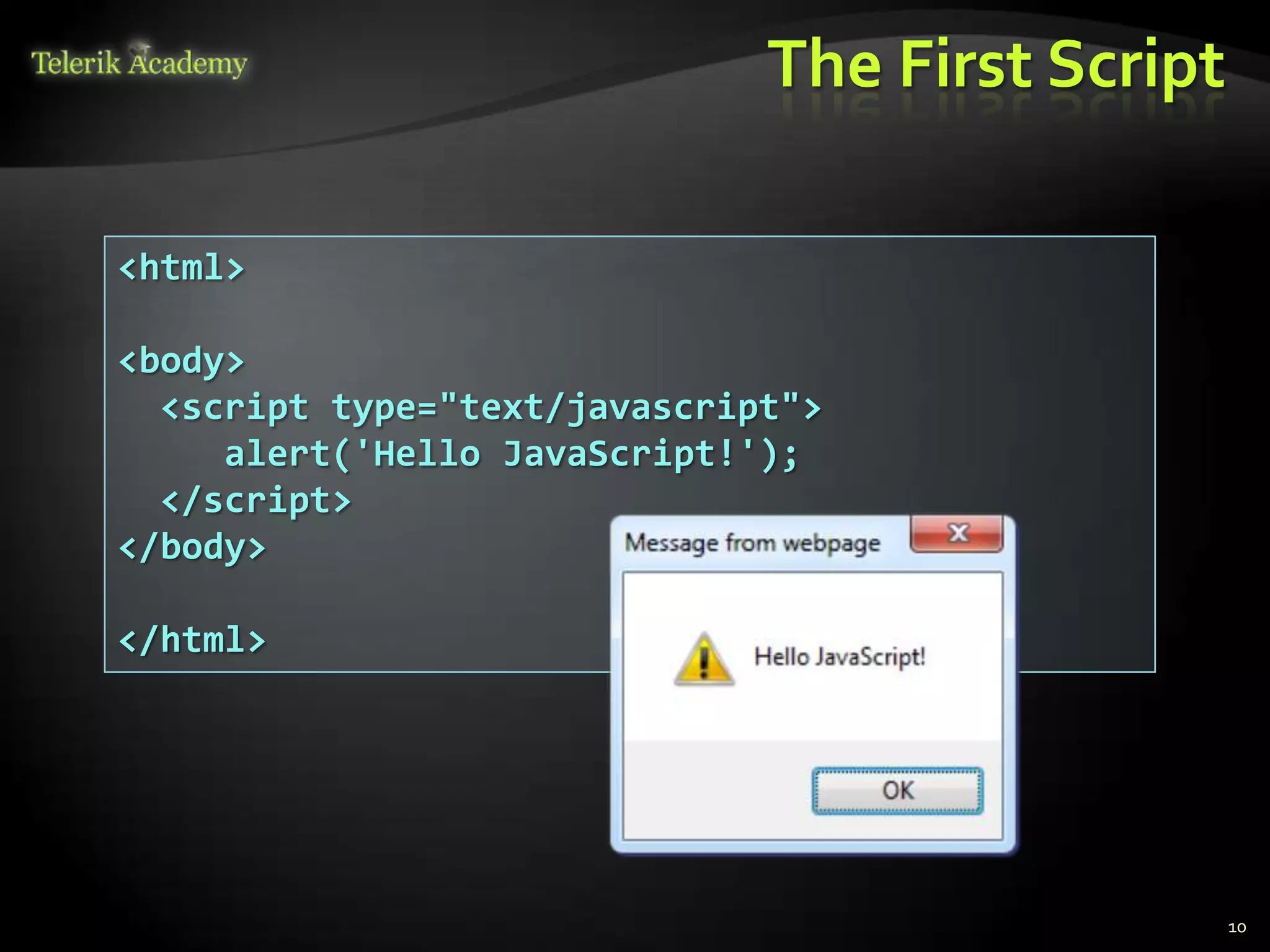
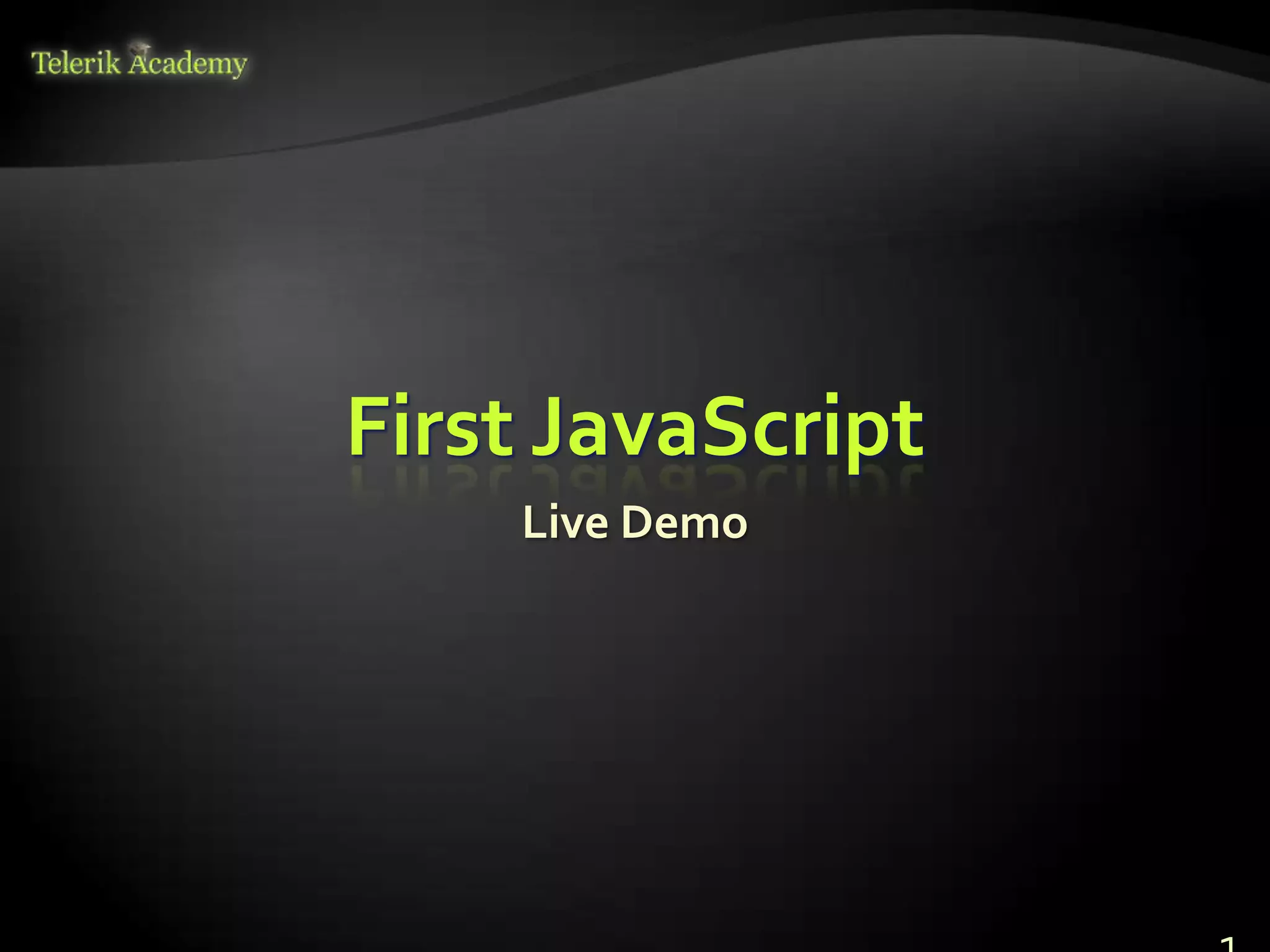
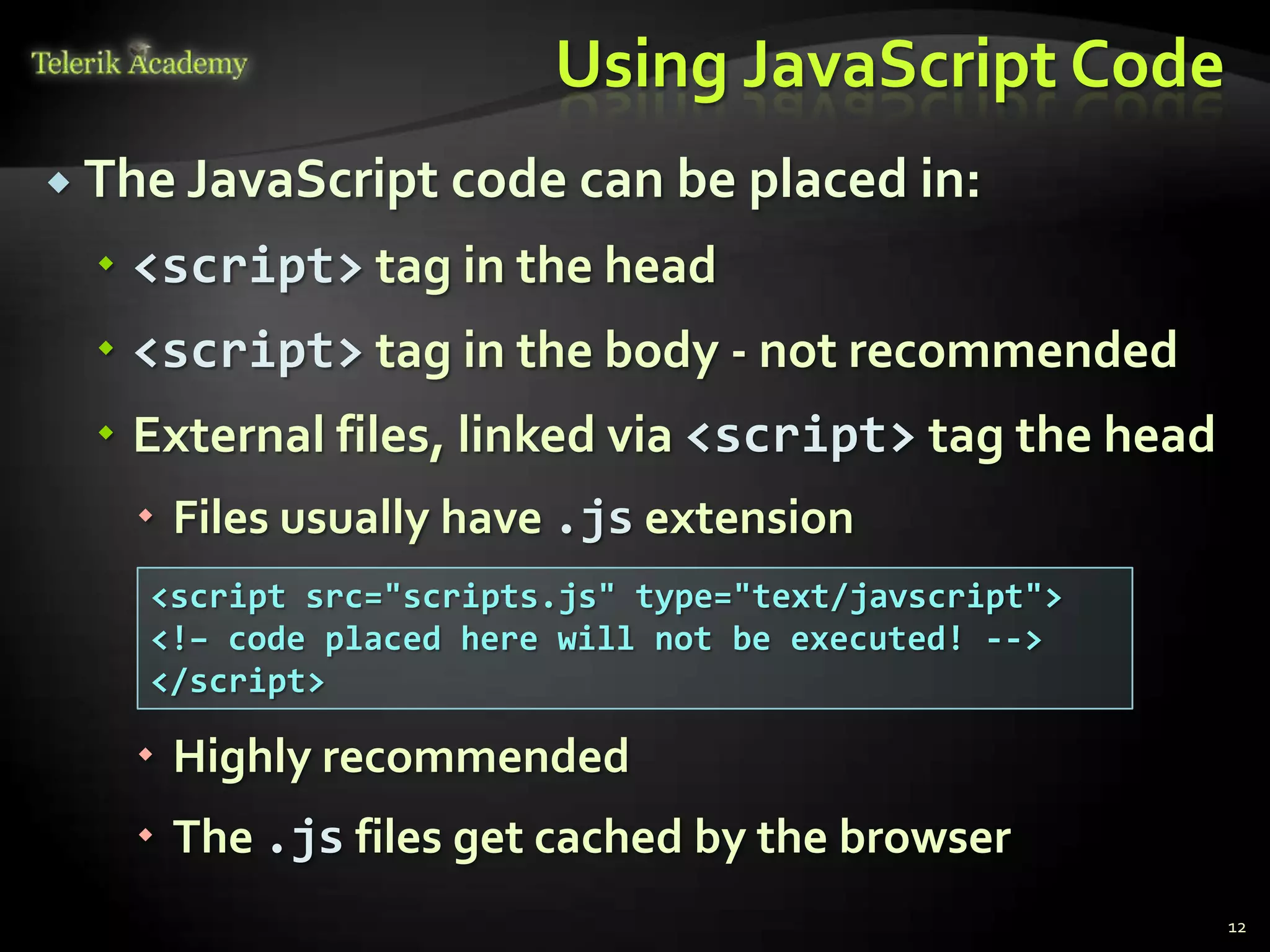
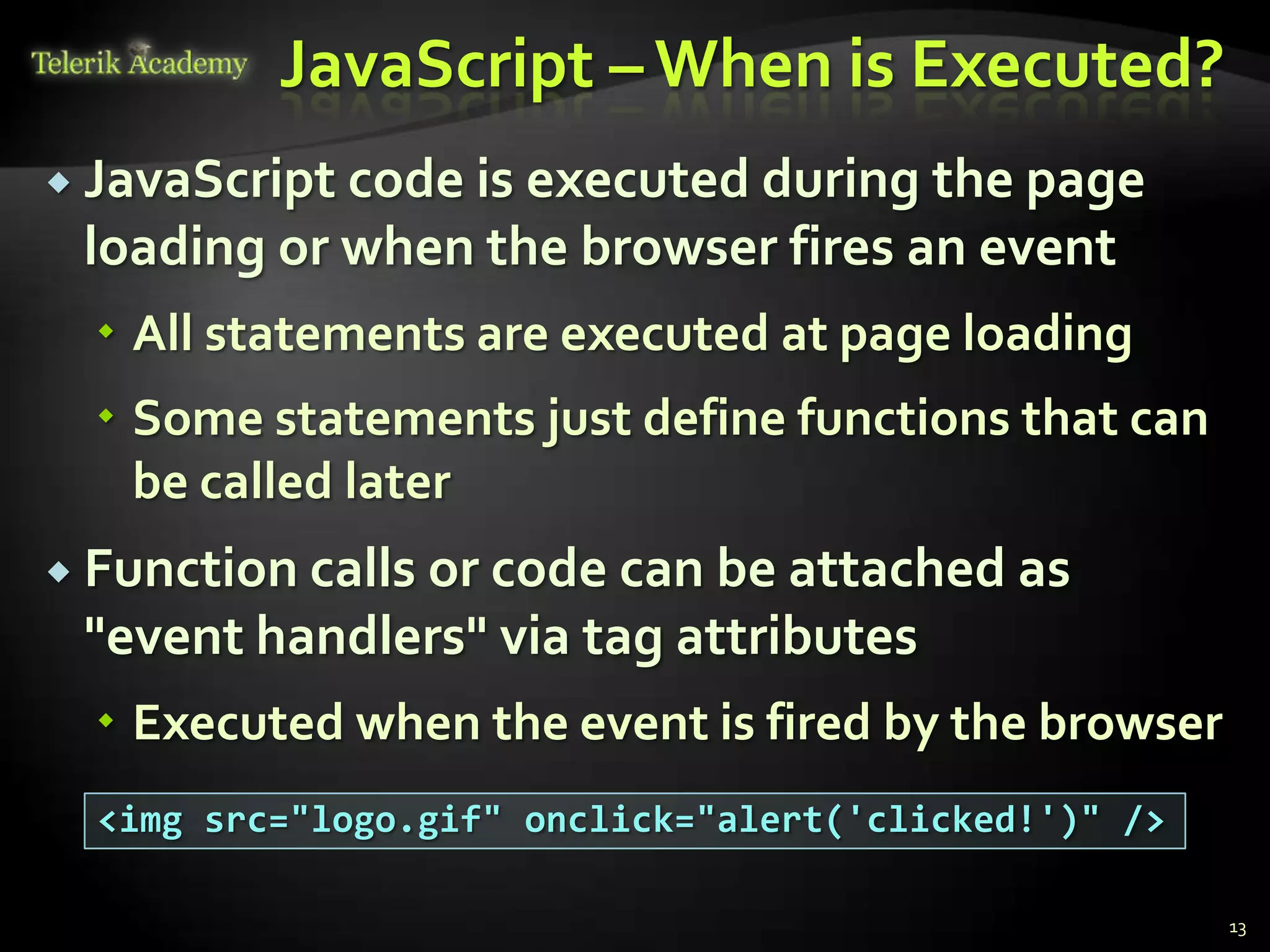
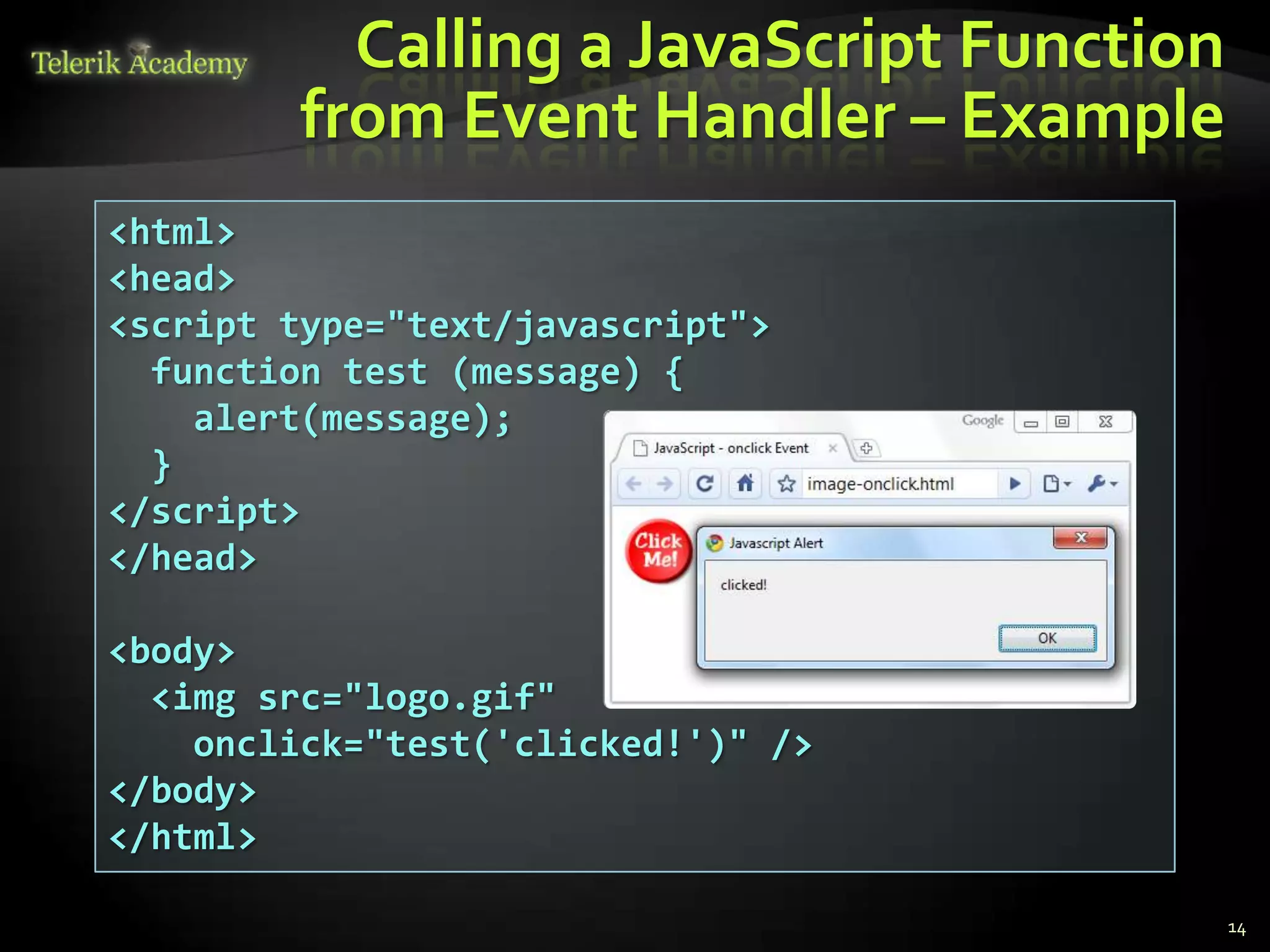
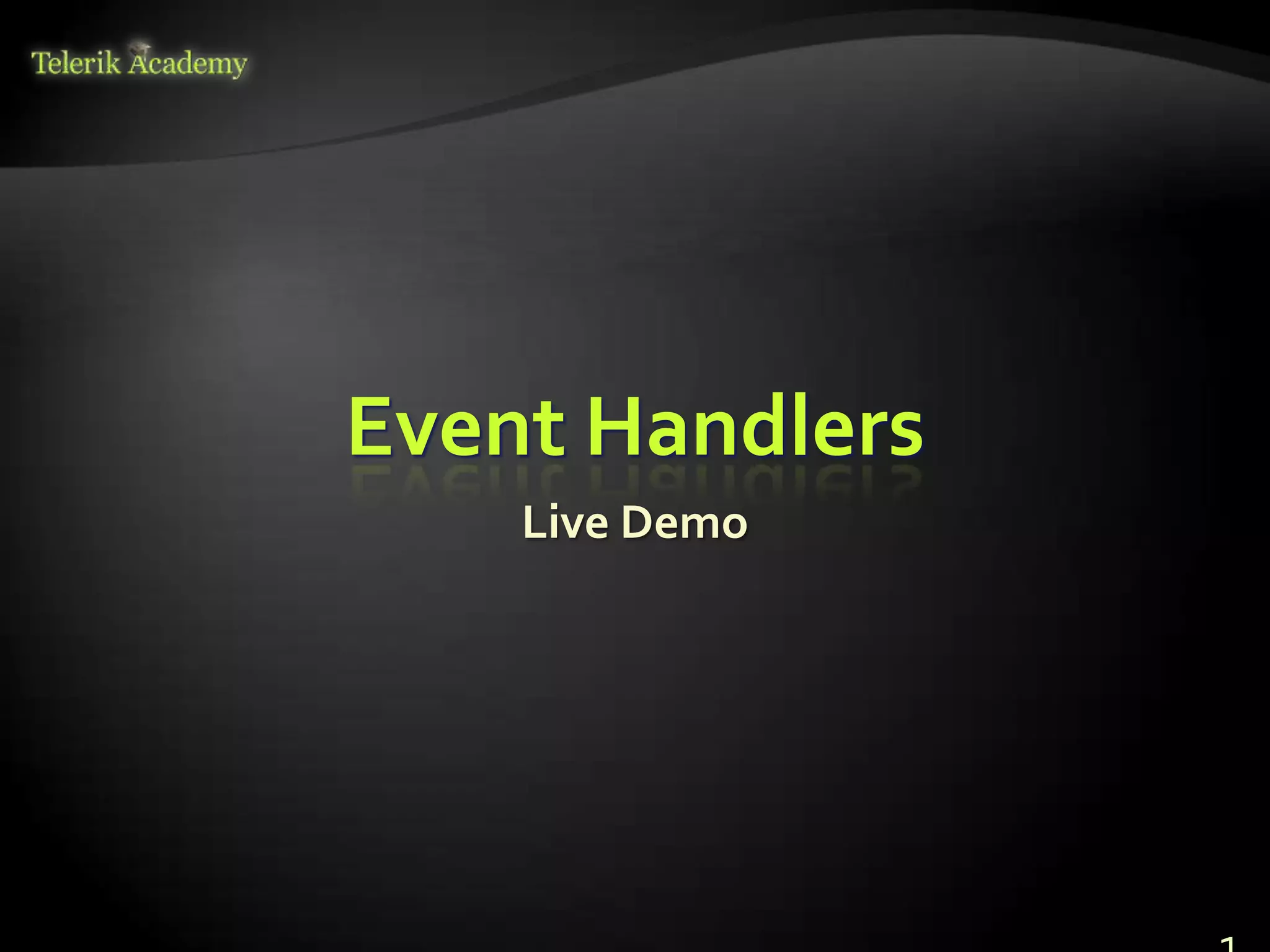
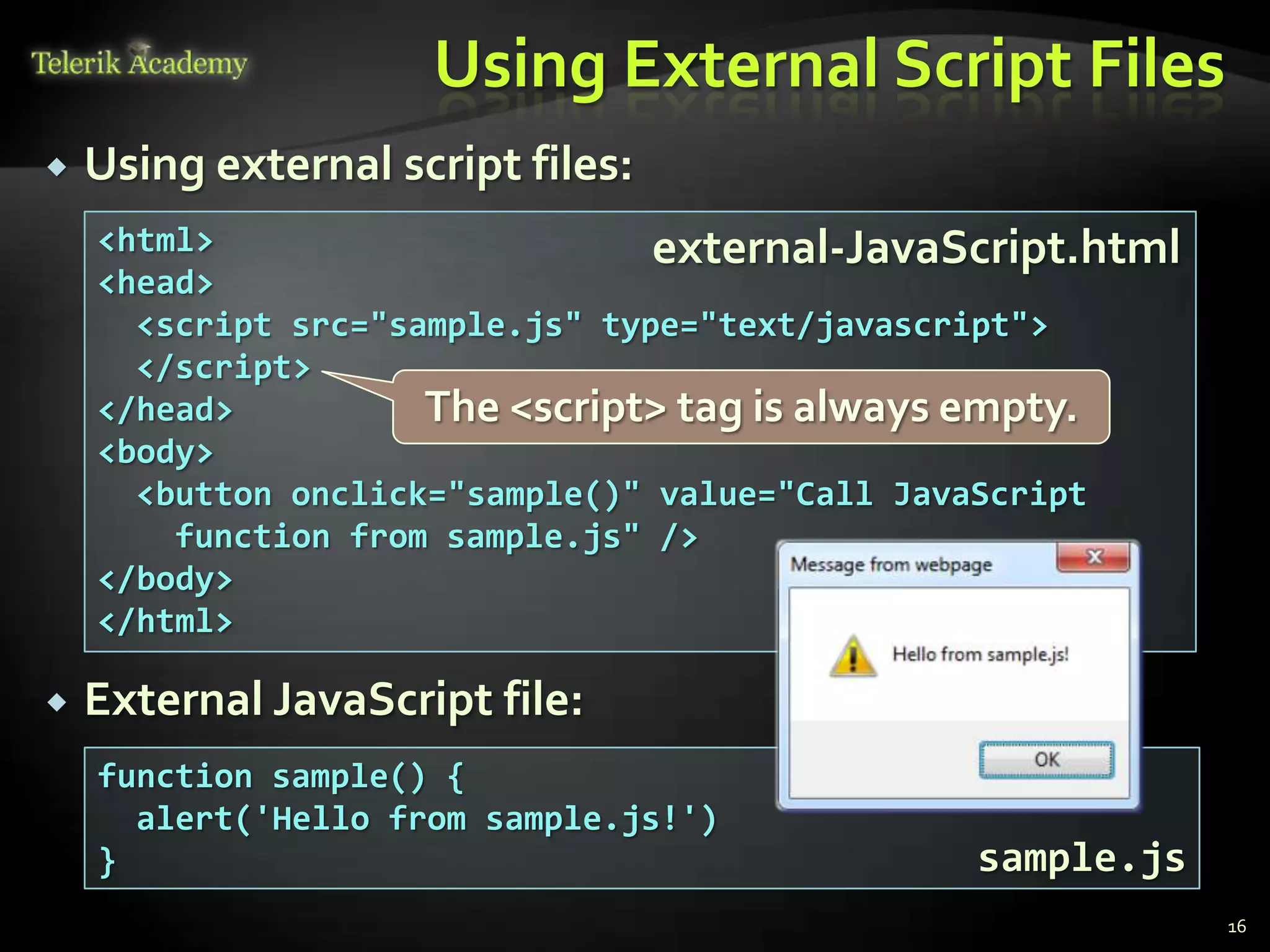

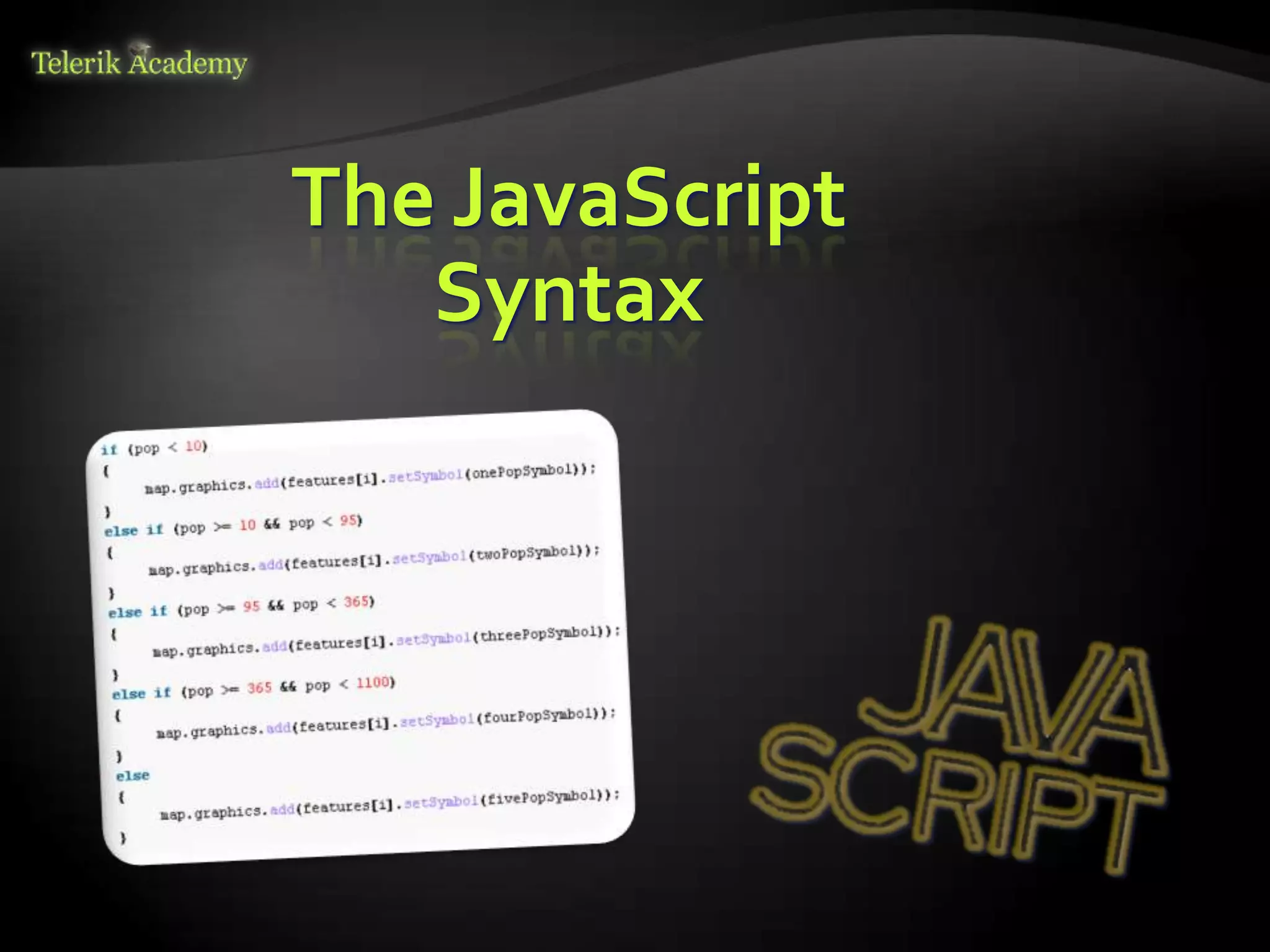
![JavaScript Syntax The JavaScript syntax is similar to C# Operators (+, *, =, !=, &&, ++, …) Variables (typeless) Conditional statements (if, else) Loops (for, while) Arrays (my_array[]) and associative arrays (my_array['abc']) Functions (can return value) Function variables (like the C# delegates) 19](https://image.slidesharecdn.com/01introduction-javascriptdevelopment-130330092852-phpapp02/75/01-Introduction-JavaScript-Development-19-2048.jpg)
![Standard Popup Boxes Alert box with text and [OK] button Just a message shown in a dialog box: alert("Some text here"); Confirmation box Contains text, [OK] button and [Cancel] button: confirm("Are you sure?"); Prompt box Contains text, input field with default value: prompt ("enter amount", 10); 20](https://image.slidesharecdn.com/01introduction-javascriptdevelopment-130330092852-phpapp02/75/01-Introduction-JavaScript-Development-20-2048.jpg)
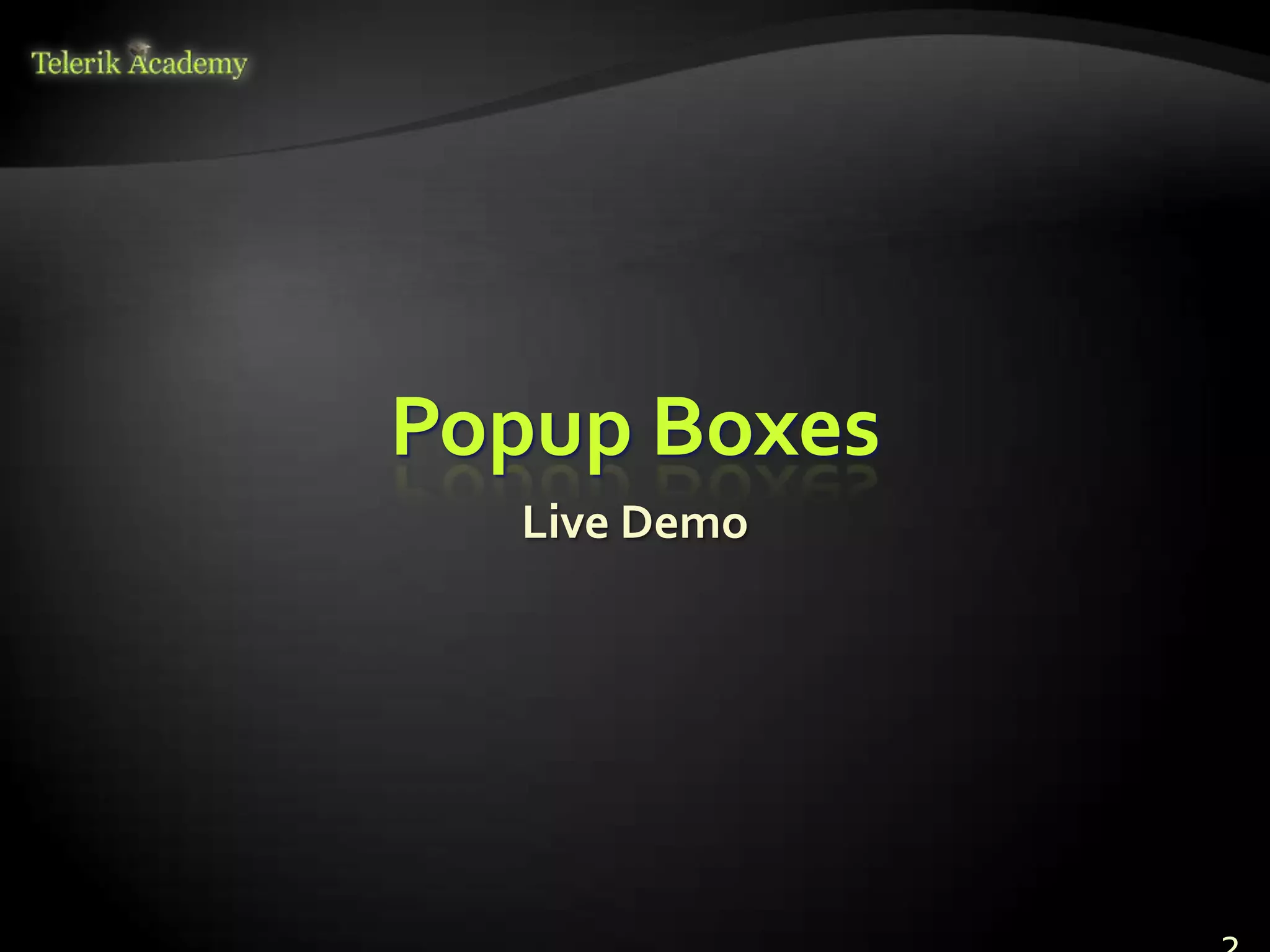
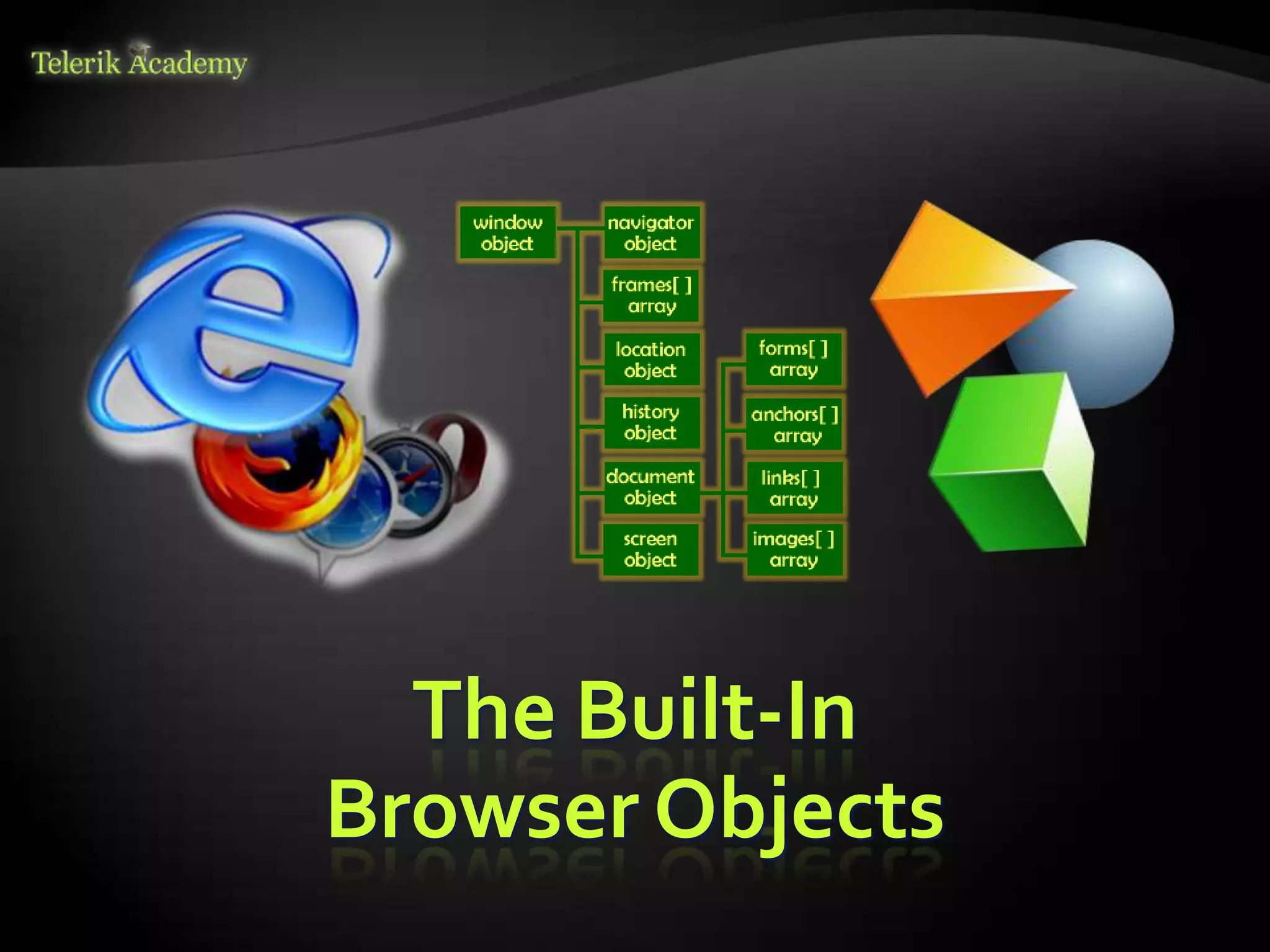
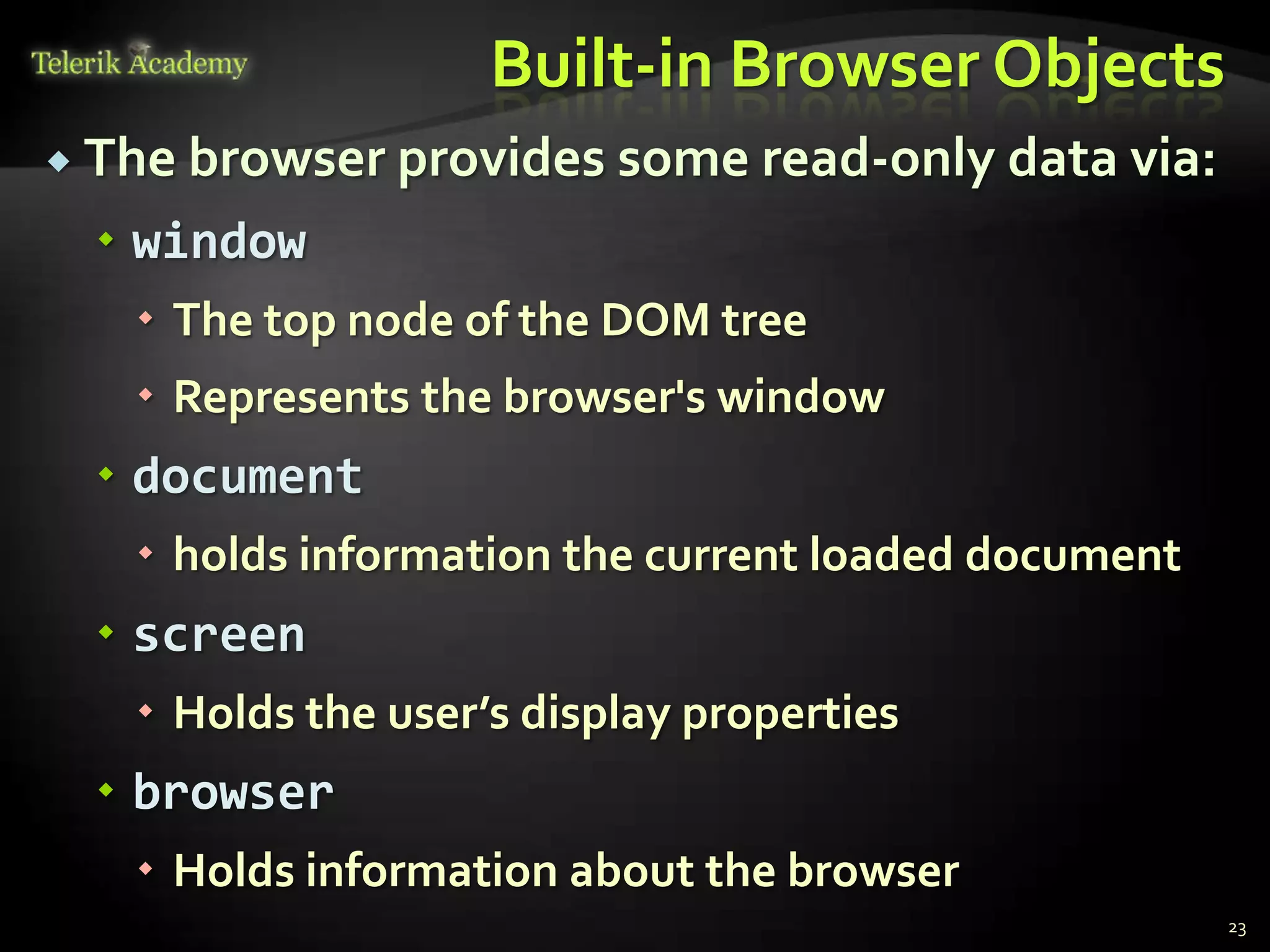
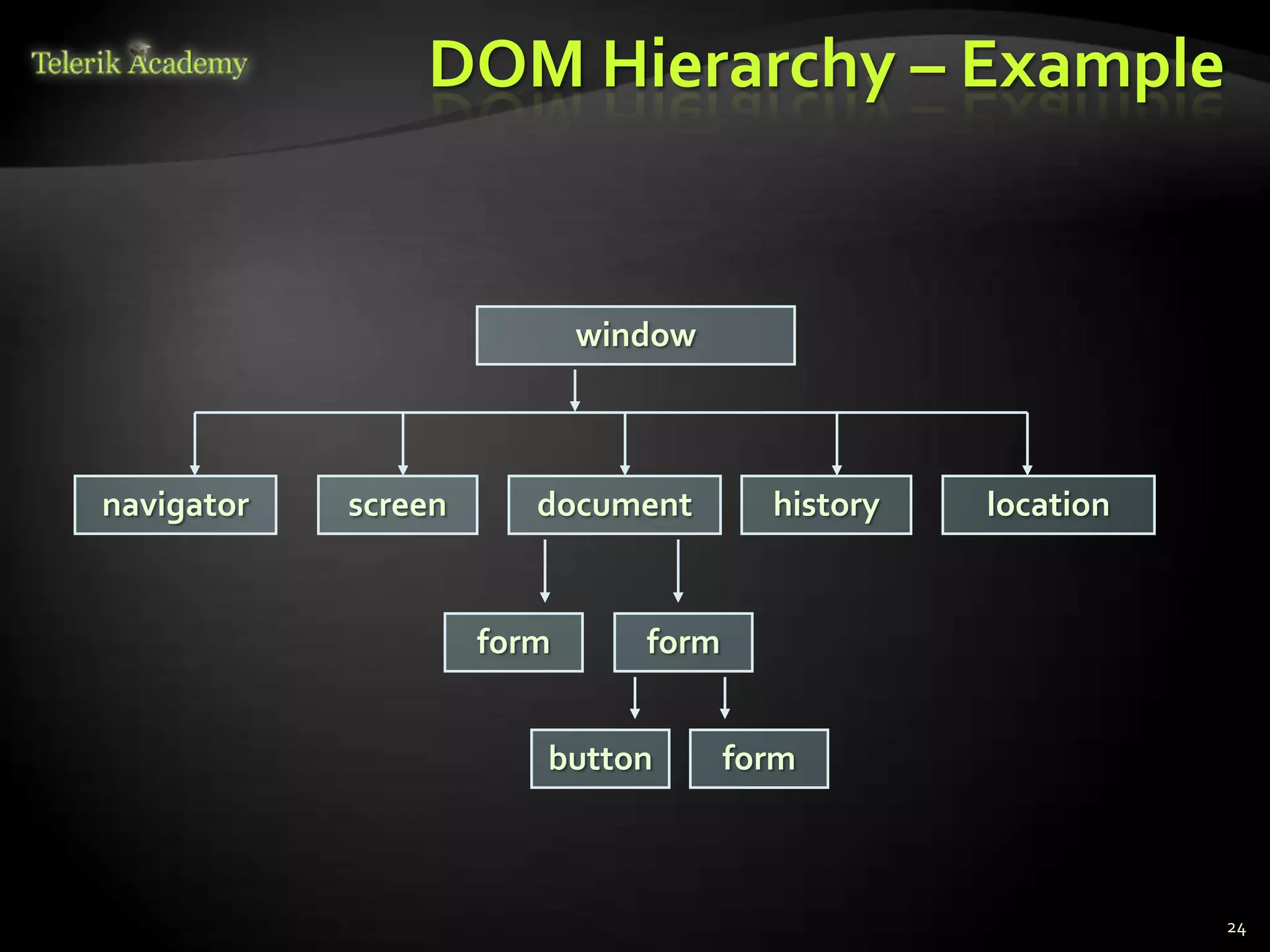
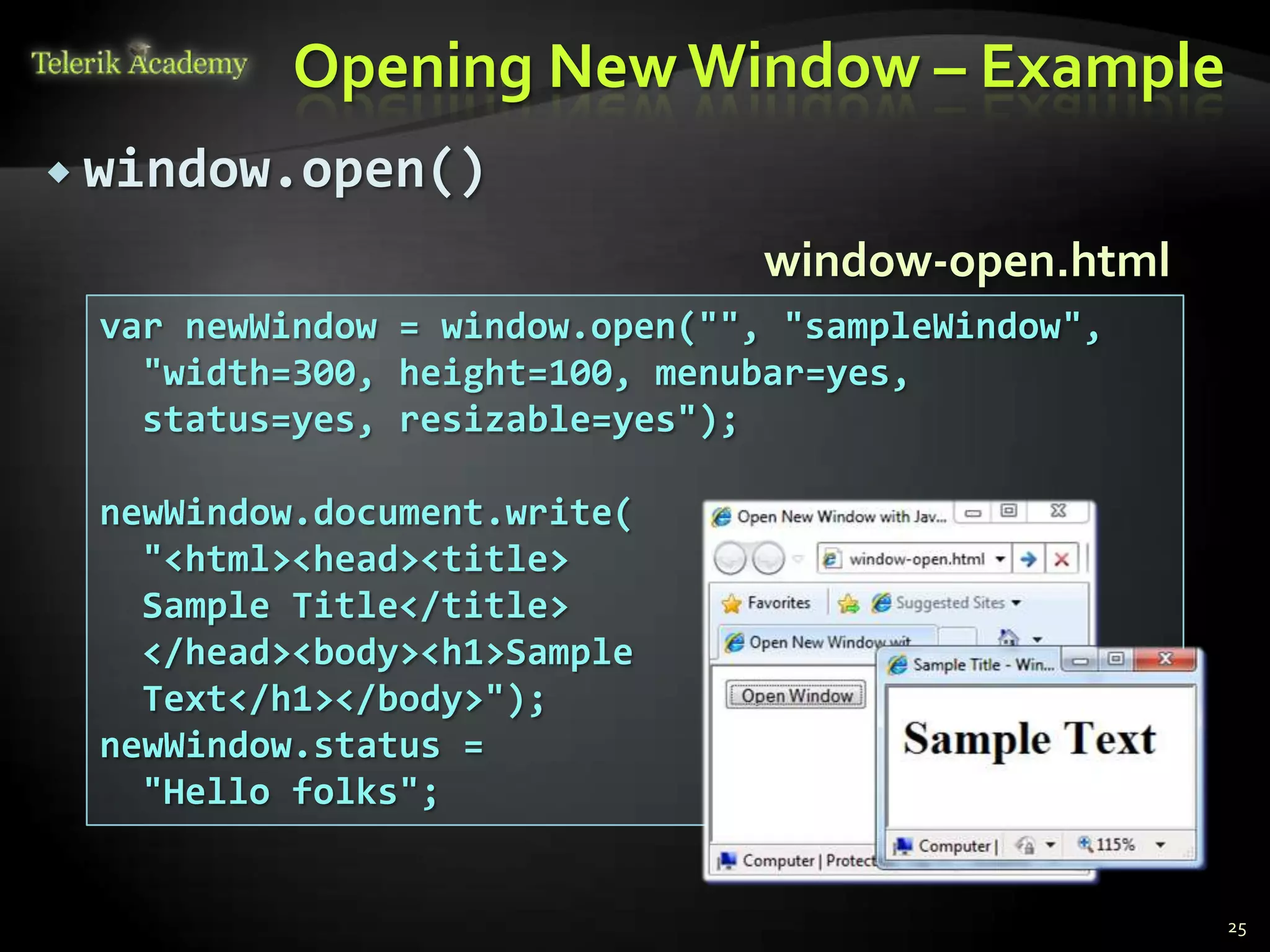
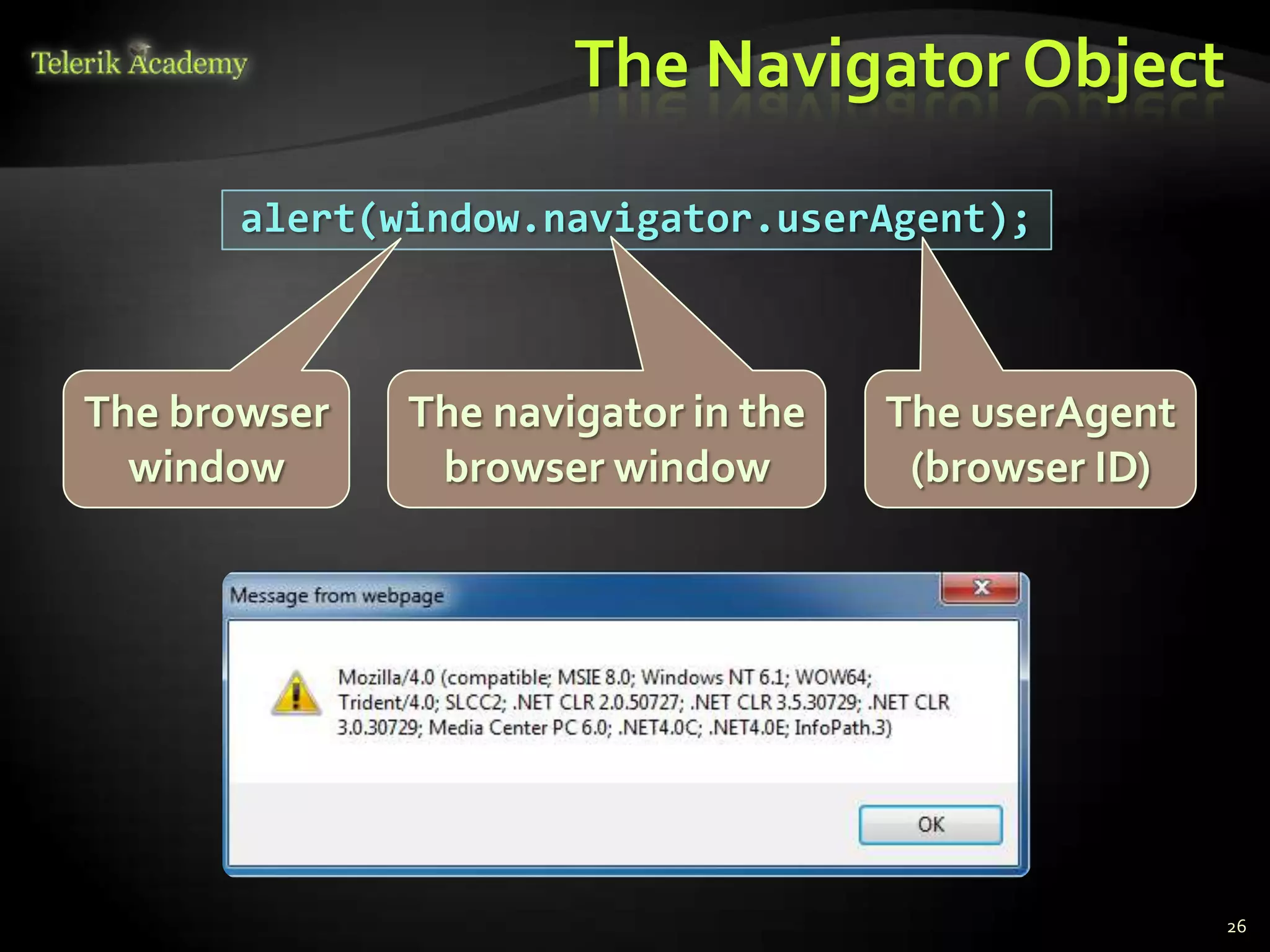
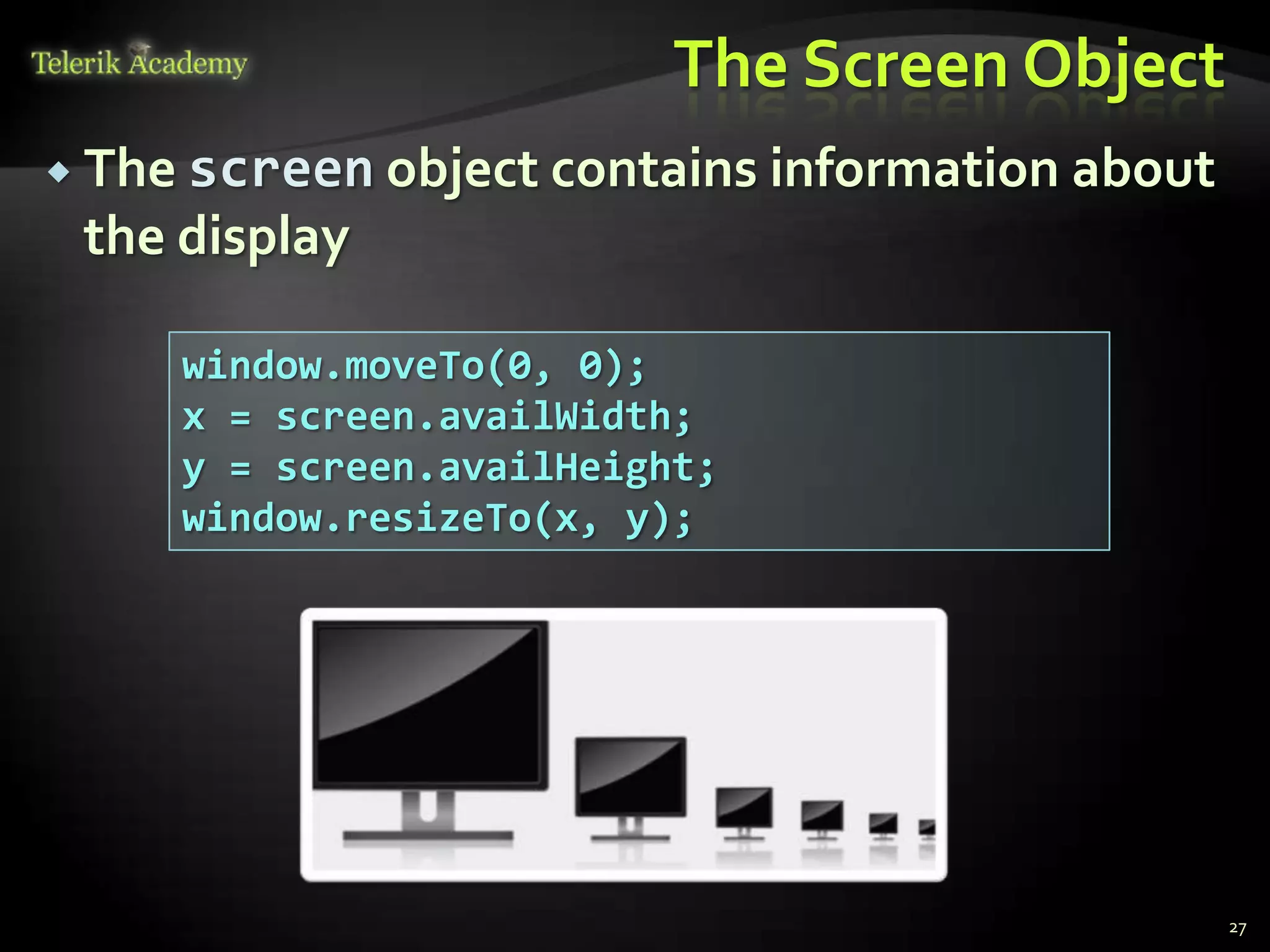
![Document and Location document object Provides some built-in arrays of specific objects on the currently loaded Web page document.links[0].href = "yahoo.com"; document.write( "This is some <b>bold text</b>"); document.location Used to access the currently open URL or redirect the browser document.location = "http://www.yahoo.com/"; 28](https://image.slidesharecdn.com/01introduction-javascriptdevelopment-130330092852-phpapp02/75/01-Introduction-JavaScript-Development-28-2048.jpg)
